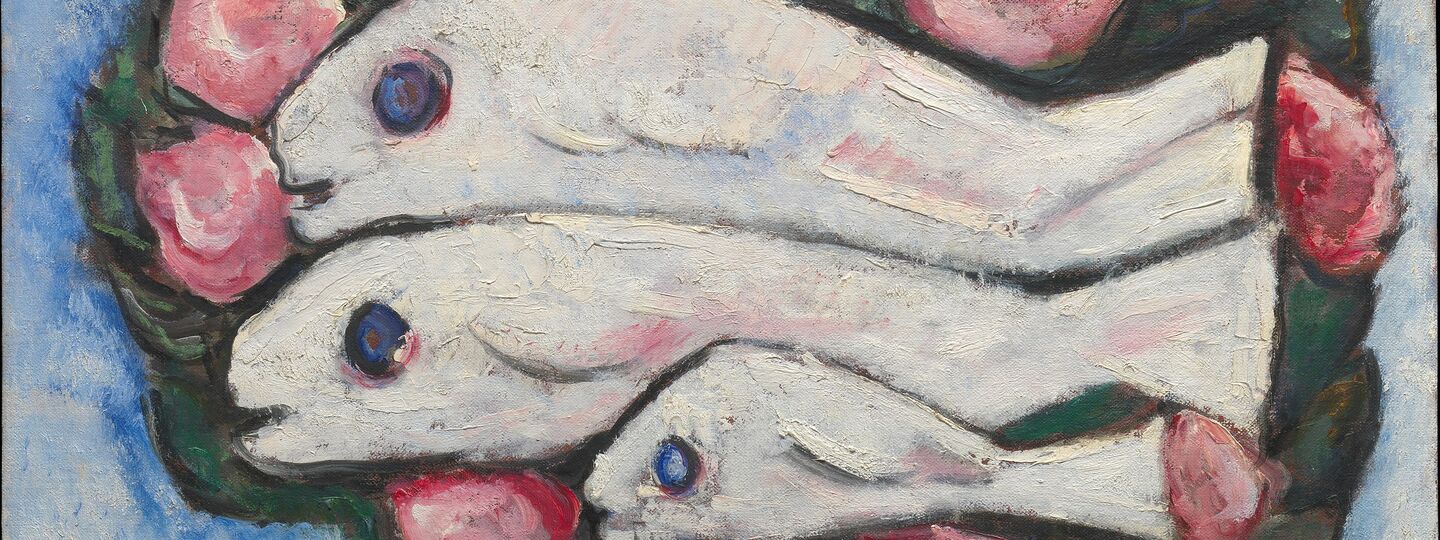
Info
Banquet in Silence
Marsden Hartley
1935 – 1936
Museo Metropolitano de Arte
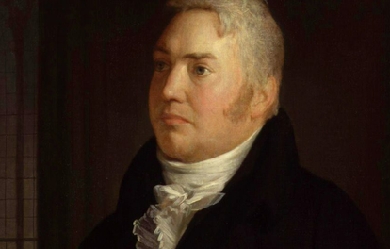
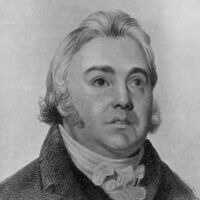
Samuel Taylor Coleridge (21 October 1772 – 25 July 1834) was an English poet, Romantic, literary critic and philosopher who, with his friend William Wordsworth, was a founder of the Romantic Movement in England and a member of the Lake Poets. He is probably best known for his poems The Rime of the Ancient Mariner and Kubla Khan, as well as for his major prose work Biographia Literaria. His critical work, especially on Shakespeare, was highly influential, and he helped introduce German idealist philosophy to English-speaking culture. He coined many familiar words and phrases, including the celebrated suspension of disbelief. He was a major influence, via Emerson, on American transcendentalism. Throughout his adult life, Coleridge suffered from crippling bouts of anxiety and depression; it has been speculated by some that he suffered from bipolar disorder, a condition as yet unidentified during his lifetime. Coleridge suffered from poor health that may have stemmed from a bout of rheumatic fever and other childhood illnesses. He was treated for these concerns with laudanum, which fostered a lifelong opium addiction. Early life Coleridge was born on 21 October 1772 in the country town of Ottery St Mary, Devon, England. Samuel's father, the Reverend John Coleridge (1718–1781), was a well-respected vicar of the parish and headmaster of Henry VIII's Free Grammar School at Ottery. He had three children by his first wife. Samuel was the youngest of ten by Reverend Coleridge's second wife, Anne Bowden (1726–1809). Coleridge suggests that he "took no pleasure in boyish sports" but instead read "incessantly" and played by himself. After John Coleridge died in 1781, 8-year-old Samuel was sent to Christ's Hospital, a charity school founded in the 16th century in Greyfriars, London, where he remained throughout his childhood, studying and writing poetry. At that school Coleridge became friends with Charles Lamb, a schoolmate, and studied the works of Virgil and William Lisle Bowles. In one of a series of autobiographical letters written to Thomas Poole, Coleridge wrote: "At six years old I remember to have read Belisarius, Robinson Crusoe, and Philip Quarll – and then I found the Arabian Nights' Entertainments – one tale of which (the tale of a man who was compelled to seek for a pure virgin) made so deep an impression on me (I had read it in the evening while my mother was mending stockings) that I was haunted by spectres whenever I was in the dark – and I distinctly remember the anxious and fearful eagerness with which I used to watch the window in which the books lay – and whenever the sun lay upon them, I would seize it, carry it by the wall, and bask, and read.” However, Coleridge seems to have appreciated his teacher, as he wrote in recollections of his schooldays in Biographia Literaria: I enjoyed the inestimable advantage of a very sensible, though at the same time, a very severe master [...] At the same time that we were studying the Greek Tragic Poets, he made us read Shakespeare and Milton as lessons: and they were the lessons too, which required most time and trouble to bring up, so as to escape his censure. I learnt from him, that Poetry, even that of the loftiest, and, seemingly, that of the wildest odes, had a logic of its own, as severe as that of science; and more difficult, because more subtle, more complex, and dependent on more, and more fugitive causes. [...] In our own English compositions (at least for the last three years of our school education) he showed no mercy to phrase, metaphor, or image, unsupported by a sound sense, or where the same sense might have been conveyed with equal force and dignity in plainer words... In fancy I can almost hear him now, exclaiming Harp? Harp? Lyre? Pen and ink, boy, you mean! Muse, boy, Muse? your Nurse's daughter, you mean! Pierian spring? Oh aye! the cloister-pump, I suppose! [...] Be this as it may, there was one custom of our master's, which I cannot pass over in silence, because I think it ... worthy of imitation. He would often permit our theme exercises, ... to accumulate, till each lad had four or five to be looked over. Then placing the whole number abreast on his desk, he would ask the writer, why this or that sentence might not have found as appropriate a place under this or that other thesis: and if no satisfying answer could be returned, and two faults of the same kind were found in one exercise, the irrevocable verdict followed, the exercise was torn up, and another on the same subject to be produced, in addition to the tasks of the day. Throughout his life, Coleridge idealized his father as pious and innocent, while his relationship with his mother was more problematic. His childhood was characterized by attention seeking, which has been linked to his dependent personality as an adult. He was rarely allowed to return home during the school term, and this distance from his family at such a turbulent time proved emotionally damaging. He later wrote of his loneliness at school in the poem Frost at Midnight: "With unclosed lids, already had I dreamt/Of my sweet birthplace." From 1791 until 1794, Coleridge attended Jesus College, Cambridge. In 1792, he won the Browne Gold Medal for an ode that he wrote on the slave trade. In December 1793, he left the college and enlisted in the Royal Dragoons using the false name "Silas Tomkyn Comberbache", perhaps because of debt or because the girl that he loved, Mary Evans, had rejected him. Afterwards, he was rumoured to have had a bout of severe depression. His brothers arranged for his discharge a few months later under the reason of "insanity" and he was readmitted to Jesus College, though he would never receive a degree from Cambridge. Pantisocracy and marriage At the university, he was introduced to political and theological ideas then considered radical, including those of the poet Robert Southey. Coleridge joined Southey in a plan, soon abandoned, to found a utopian commune-like society, called Pantisocracy, in the wilderness of Pennsylvania. In 1795, the two friends married sisters Sarah and Edith Fricker, in St Mary Redcliffe, Bristol, but Coleridge's marriage proved unhappy. He grew to detest his wife, whom he only married because of social constraints. He eventually separated from her. Coleridge made plans to establish a journal, The Watchman, to be printed every eight days in order to avoid a weekly newspaper tax. The first issue of the short-lived journal was published in March 1796; it had ceased publication by May of that year. The years 1797 and 1798, during which he lived in what is now known as Coleridge Cottage, in Nether Stowey, Somerset, were among the most fruitful of Coleridge's life. In 1795, Coleridge met poet William Wordsworth and his sister Dorothy. (Wordsworth, having visited him and being enchanted by the surroundings, rented Alfoxton Park, a little over three miles [5 km] away.) Besides the Rime of The Ancient Mariner, he composed the symbolic poem Kubla Khan, written—Coleridge himself claimed—as a result of an opium dream, in "a kind of a reverie"; and the first part of the narrative poem Christabel. The writing of Kubla Khan, written about the Mongol emperor Kublai Khan and his legendary palace at Xanadu, was said to have been interrupted by the arrival of a "Person from Porlock" — an event that has been embellished upon in such varied contexts as science fiction and Nabokov's Lolita. During this period, he also produced his much-praised "conversation" poems This Lime-Tree Bower My Prison, Frost at Midnight, and The Nightingale. In 1798, Coleridge and Wordsworth published a joint volume of poetry, Lyrical Ballads, which proved to be the starting point for the English romantic movement. Wordsworth may have contributed more poems, but the real star of the collection was Coleridge's first version of The Rime of the Ancient Mariner. It was the longest work and drew more praise and attention than anything else in the volume. In the spring Coleridge temporarily took over for Rev. Joshua Toulmin at Taunton's Mary Street Unitarian Chapel while Rev. Toulmin grieved over the drowning death of his daughter Jane. Poetically commenting on Toulmin's strength, Coleridge wrote in a 1798 letter to John Prior Estlin, "I walked into Taunton (eleven miles) and back again, and performed the divine services for Dr. Toulmin. I suppose you must have heard that his daughter, (Jane, on 15 April 1798) in a melancholy derangement, suffered herself to be swallowed up by the tide on the sea-coast between Sidmouth and Bere [sic] (Beer). These events cut cruelly into the hearts of old men: but the good Dr. Toulmin bears it like the true practical Christian, – there is indeed a tear in his eye, but that eye is lifted up to the Heavenly Father." In the autumn of 1798, Coleridge and Wordsworth left for a stay in Germany; Coleridge soon went his own way and spent much of his time in university towns. During this period, he became interested in German philosophy, especially the transcendental idealism and critical philosophy of Immanuel Kant, and in the literary criticism of the 18th century dramatist Gotthold Lessing. Coleridge studied German and, after his return to England, translated the dramatic trilogy Wallenstein by the German Classical poet Friedrich Schiller into English. He continued to pioneer these ideas through his own critical writings for the rest of his life (sometimes without attribution), although they were unfamiliar and difficult for a culture dominated by empiricism. In 1799, Coleridge and Wordsworth stayed at Thomas Hutchinson's farm on the Tees at Sockburn, near Darlington. It was at Sockburn that Coleridge wrote his ballad-poem Love, addressed to Sara. The knight mentioned is the mailed figure on the Conyers tomb in ruined Sockburn church. The figure has a wyvern at his feet, a reference to the Sockburn worm slain by Sir John Conyers (and a possible source for Lewis Carroll's Jabberwocky). The worm was supposedly buried under the rock in the nearby pasture; this was the 'greystone' of Coleridge's first draft, later transformed into a 'mount'. The poem was a direct inspiration for John Keats' famous poem La Belle Dame Sans Merci. Coleridge's early intellectual debts, besides German idealists like Kant and critics like Lessing, were first to William Godwin's Political Justice, especially during his Pantisocratic period, and to David Hartley's Observations on Man, which is the source of the psychology which is found in Frost at Midnight. Hartley argued that one becomes aware of sensory events as impressions, and that "ideas" are derived by noticing similarities and differences between impressions and then by naming them. Connections resulting from the coincidence of impressions create linkages, so that the occurrence of one impression triggers those links and calls up the memory of those ideas with which it is associated (See Dorothy Emmet, "Coleridge and Philosophy"). Coleridge was critical of the literary taste of his contemporaries, and a literary conservative insofar as he was afraid that the lack of taste in the ever growing masses of literate people would mean a continued desecration of literature itself. In 1800, he returned to England and shortly thereafter settled with his family and friends at Keswick in the Lake District of Cumberland to be near Grasmere, where Wordsworth had moved. Soon, however, he was beset by marital problems, illnesses, increased opium dependency, tensions with Wordsworth, and a lack of confidence in his poetic powers, all of which fuelled the composition of Dejection: An Ode and an intensification of his philosophical studies. Later life and increasing drug use In 1804, he travelled to Sicily and Malta, working for a time as Acting Public Secretary of Malta under the Commissioner, Alexander Ball, a task he performed quite successfully. However, he gave this up and returned to England in 1806. Dorothy Wordsworth was shocked at his condition upon his return. From 1807 to 1808, Coleridge returned to Malta and then travelled in Sicily and Italy, in the hope that leaving Britain's damp climate would improve his health and thus enable him to reduce his consumption of opium. Thomas de Quincey alleges in his Recollections of the Lakes and the Lake Poets that it was during this period that Coleridge became a full-blown opium addict, using the drug as a substitute for the lost vigour and creativity of his youth. It has been suggested, however, that this reflects de Quincey's own experiences more than Coleridge's. His opium addiction (he was using as much as two quarts of laudanum a week) now began to take over his life: he separated from his wife Sarah in 1808, quarrelled with Wordsworth in 1810, lost part of his annuity in 1811, and put himself under the care of Dr. Daniel in 1814. In 1809, Coleridge made his second attempt to become a newspaper publisher with the publication of the journal entitled The Friend. It was a weekly publication that, in Coleridge’s typically ambitious style, was written, edited, and published almost entirely single-handedly. Given that Coleridge tended to be highly disorganized and had no head for business, the publication was probably doomed from the start. Coleridge financed the journal by selling over five hundred subscriptions, over two dozen of which were sold to members of Parliament, but in late 1809, publication was crippled by a financial crisis and Coleridge was obliged to approach "Conversation Sharp", Tom Poole and one or two other wealthy friends for an emergency loan in order to continue. The Friend was an eclectic publication that drew upon every corner of Coleridge’s remarkably diverse knowledge of law, philosophy, morals, politics, history, and literary criticism. Although it was often turgid, rambling, and inaccessible to most readers, it ran for 25 issues and was republished in book form a number of times. Years after its initial publication, The Friend became a highly influential work and its effect was felt on writers and philosophers from J.S. Mill to Emerson. Between 1810 and 1820, this "giant among dwarfs", as he was often considered by his contemporaries, gave a series of lectures in London and Bristol – those on Shakespeare renewed interest in the playwright as a model for contemporary writers. Much of Coleridge's reputation as a literary critic is founded on the lectures that he undertook in the winter of 1810–11 which were sponsored by the Philosophical Institution and given at Scot's Corporation Hall off Fetter Lane, Fleet Street. These lectures were heralded in the prospectus as "A Course of Lectures on Shakespeare and Milton, in Illustration of the Principles of Poetry." Coleridge's ill-health, opium-addiction problems, and somewhat unstable personality meant that all his lectures were plagued with problems of delays and a general irregularity of quality from one lecture to the next. Furthermore, Coleridge's mind was extremely dynamic and his personality was spasmodic. As a result of these factors, Coleridge often failed to prepare anything but the loosest set of notes for his lectures and regularly entered into extremely long digressions which his audiences found difficult to follow. However, it was the lecture on Hamlet given on 2 January 1812 that was considered the best and has influenced Hamlet studies ever since. Before Coleridge, Hamlet was often denigrated and belittled by critics from Voltaire to Dr. Johnson. Coleridge rescued Hamlet and his thoughts on the play are often still published as supplements to the text. In August 1814, Coleridge was approached by Lord Byron's publisher, John Murray, about the possibility of translating Goethe's classic Faust (1808). Coleridge was regarded by many as the greatest living writer on the demonic and he accepted the commission, only to abandon work on it after six weeks. Until recently, scholars have accepted that Coleridge never returned to the project, despite Goethe's own belief in the 1820s that Coleridge had in fact completed a long translation of the work. In September 2007, Oxford University Press sparked a heated scholarly controversy by publishing an English translation of Goethe's work which purported to be Coleridge's long-lost masterpiece (the text in question first appeared anonymously in 1821). In 1817, Coleridge, with his addiction worsening, his spirits depressed, and his family alienated, took residence in the Highgate homes, then just north of London, of the physician James Gillman, first at South Grove and later at the nearby 3 The Grove. Gillman was partially successful in controlling the poet's addiction. Colerdige remained in Highgate for the rest of his life, and the house became a place of literary pilgrimage of writers including Carlyle and Emerson. In Gillman's home, he finished his major prose work, the Biographia Literaria (1817), a volume composed of 23 chapters of autobiographical notes and dissertations on various subjects, including some incisive literary theory and criticism. He composed much poetry here and had many inspirations — a few of them from opium overdose. Perhaps because he conceived such grand projects, he had difficulty carrying them through to completion, and he berated himself for his "indolence". It is unclear whether his growing use of opium (and the brandy in which it was dissolved) was a symptom or a cause of his growing depression. He published other writings while he was living at the Gillman home, notably Sibylline Leaves (1817), Aids to Reflection (1825), and Church and State (1826). He died in Highgate, London on 25 July 1834 as a result of heart failure compounded by an unknown lung disorder, possibly linked to his use of opium. Coleridge had spent 18 years under the roof of the Gillman family, who built an addition onto their home to accommodate the poet. Carlyle described him at Highgate: "Coleridge sat on the brow of Highgate Hill, in those years, looking down on London and its smoke-tumult, like a sage escaped from the inanity of life`s battle ... The practical intellects of the world did not much heed him, or carelessly reckoned him a metaphysical dreamer: but to the rising spirits of the young generation he had this dusky sublime character; and sat there as a kind of Magus, girt in mystery and enigma; his Dodona oak-grove (Mr. Gilman`s house at Highgate) whispering strange things, uncertain whether oracles or jargon." Poetry Despite not enjoying the name recognition or popular acclaim that Wordsworth or Shelley have had, Coleridge is one of the most important figures in English poetry. His poems directly and deeply influenced all the major poets of the age. He was known by his contemporaries as a meticulous craftsman who was more rigorous in his careful reworking of his poems than any other poet, and Southey and Wordsworth were dependent on his professional advice. His influence on Wordsworth is particularly important because many critics have credited Coleridge with the very idea of "Conversational Poetry". The idea of utilizing common, everyday language to express profound poetic images and ideas for which Wordsworth became so famous may have originated almost entirely in Coleridge’s mind. It is difficult to imagine Wordsworth’s great poems, The Excursion or The Prelude, ever having been written without the direct influence of Coleridge’s originality. As important as Coleridge was to poetry as a poet, he was equally important to poetry as a critic. Coleridge's philosophy of poetry, which he developed over many years, has been deeply influential in the field of literary criticism. This influence can be seen in such critics as A.O. Lovejoy and I.A. Richards. The Rime of the Ancient Mariner, Christabel, and Kubla Khan Coleridge is probably best known for his long poems, The Rime of the Ancient Mariner and Christabel. Even those who have never read the Rime have come under its influence: its words have given the English language the metaphor of an albatross around one's neck, the quotation of "water, water everywhere, nor any drop to drink" (almost always rendered as "but not a drop to drink"), and the phrase "a sadder and a wiser man" (again, usually rendered as "sadder but wiser man"). The phrase "All creatures great and small" may have been inspired by The Rime: "He prayeth best, who loveth best;/ All things great and small;/ For the dear God who loveth us;/ He made and loveth all."Christabel is known for its musical rhythm, language, and its Gothic tale. Kubla Khan, or, A Vision in a Dream, A Fragment, although shorter, is also widely known. Both Kubla Khan and Christabel have an additional "Romantic" aura because they were never finished. Stopford Brooke characterised both poems as having no rival due to their "exquisite metrical movement" and "imaginative phrasing.” The Conversation poems * The Eolian Harp (1795) * Reflections on having left a Place of Retirement (1795) * This Lime-Tree Bower my Prison (1797) * Frost at Midnight (1798) * Fears in Solitude (1798) * The Nightingale: A Conversation Poem (1798) * Dejection: An Ode (1802) * To William Wordsworth (1807) The eight of Coleridge's poems listed above are now often discussed as a group entitled "Conversation poems". The term itself was coined in 1928 by George McLean Harper, who borrowed the subtitle of The Nightingale: A Conversation Poem (1798) to describe the seven other poems as well. The poems are considered by many critics to be among Coleridge's finest verses; thus Harold Bloom has written, "With Dejection, The Ancient Mariner, and Kubla Khan, Frost at Midnight shows Coleridge at his most impressive." They are also among his most influential poems, as discussed further below. Harper himself considered that the eight poems represented a form of blank verse that is "...more fluent and easy than Milton's, or any that had been written since Milton". In 2006 Robert Koelzer wrote about another aspect of this apparent "easiness", noting that Conversation poems such as "... Coleridge's The Eolian Harp and The Nightingale maintain a middle register of speech, employing an idiomatic language that is capable of being construed as un-symbolic and un-musical: language that lets itself be taken as 'merely talk' rather than rapturous 'song'." The last ten lines of "Frost at Midnight" were chosen by Harper as the "best example of the peculiar kind of blank verse Coleridge had evolved, as natural-seeming as prose, but as exquisitely artistic as the most complicated sonnet." The speaker of the poem is addressing his infant son, asleep by his side: Therefore all seasons shall be sweet to thee, Whether the summer clothe the general earth With greenness, or the redbreast sit and sing Betwixt the tufts of snow on the bare branch Of mossy apple-tree, while the nigh thatch Smokes in the sun-thaw; whether the eave-drops fall Heard only in the trances of the blast, Or if the secret ministry of frost Shall hang them up in silent icicles, Quietly shining to the quiet Moon. In 1965, M. H. Abrams wrote a broad description that applies to the Conversation poems: "The speaker begins with a description of the landscape; an aspect or change of aspect in the landscape evokes a varied by integral process of memory, thought, anticipation, and feeling which remains closely intervolved with the outer scene. In the course of this meditation the lyric speaker achieves an insight, faces up to a tragic loss, comes to a moral decision, or resolves an emotional problem. Often the poem rounds itself to end where it began, at the outer scene, but with an altered mood and deepened understanding which is the result of the intervening meditation." In fact, Abrams was describing both the Conversation poems and later poems influenced by them. Abrams' essay has been called a "touchstone of literary criticism". As Paul Magnuson described it in 2002, "Abrams credited Coleridge with originating what Abrams called the 'greater Romantic lyric', a genre that began with Coleridge's 'Conversation' poems, and included Wordsworth's Tintern Abbey, Shelley's Stanzas Written in Dejection and Keats's Ode to a Nightingale, and was a major influence on more modern lyrics by Matthew Arnold, Walt Whitman, Wallace Stevens, and W. H. Auden.” Literary criticism In addition to his poetry, Coleridge also wrote influential pieces of literary criticism including Biographia Literaria, a collection of his thoughts and opinions on literature which he published in 1817. The work delivered both biographical explanations of the author's life as well as his impressions on literature. The collection also contained an analysis of a broad range of philosophical principles of literature ranging from Aristotle to Immanuel Kant and Schelling and applied them to the poetry of peers such as William Wordsworth. Coleridge's explanation of metaphysical principles were popular topics of discourse in academic communities throughout the 19th and 20th centuries, and T.S. Eliot stated that he believed that Coleridge was "perhaps the greatest of English critics, and in a sense the last." Eliot suggests that Coleridge displayed "natural abilities" far greater than his contemporaries, dissecting literature and applying philosophical principles of metaphysics in a way that brought the subject of his criticisms away from the text and into a world of logical analysis that mixed logical analysis and emotion. However, Eliot also criticizes Coleridge for allowing his emotion to play a role in the metaphysical process, believing that critics should not have emotions that are not provoked by the work being studied. Hugh Kenner in Historical Fictions, discusses Norman Furman's Coleridge, the Damaged Archangel and suggests that the term "criticism" is too often applied to Biographia Literaria, which both he and Furman describe as having failed to explain or help the reader understand works of art. To Kenner, Coleridge's attempt to discuss complex philosophical concepts without describing the rational process behind them displays a lack of critical thinking that makes the volume more of a biography than a work of criticism. In Biographia Literaria and his poetry, symbols are not merely "objective correlatives" to Coleridge, but instruments for making the universe and personal experience intelligible and spiritually covalent. To Coleridge, the "cinque spotted spider," making its way upstream "by fits and starts," [Biographia Literaria] is not merely a comment on the intermittent nature of creativity, imagination, or spiritual progress, but the journey and destination of his life. The spider's five legs represent the central problem that Coleridge lived to resolve, the conflict between Aristotelian logic and Christian philosophy. Two legs of the spider represent the "me-not me" of thesis and antithesis, the idea that a thing cannot be itself and its opposite simultaneously, the basis of the clockwork Newtonian world view that Coleridge rejected. The remaining three legs—exothesis, mesothesis and synthesis or the Holy trinity—represent the idea that things can diverge without being contradictory. Taken together, the five legs—with synthesis in the center, form the Holy Cross of Ramist logic. The cinque-spotted spider is Coleridge's emblem of holism, the quest and substance of Coleridge's thought and spiritual life. Coleridge and the influence of the Gothic Coleridge wrote reviews of Ann Radcliffe’s books and The Mad Monk, among others. He comments in his reviews: "Situations of torment, and images of naked horror, are easily conceived; and a writer in whose works they abound, deserves our gratitude almost equally with him who should drag us by way of sport through a military hospital, or force us to sit at the dissecting-table of a natural philosopher. To trace the nice boundaries, beyond which terror and sympathy are deserted by the pleasurable emotions, – to reach those limits, yet never to pass them, hic labor, hic opus est." and "The horrible and the preternatural have usually seized on the popular taste, at the rise and decline of literature. Most powerful stimulants, they can never be required except by the torpor of an unawakened, or the languor of an exhausted, appetite... We trust, however, that satiety will banish what good sense should have prevented; and that, wearied with fiends, incomprehensible characters, with shrieks, murders, and subterraneous dungeons, the public will learn, by the multitude of the manufacturers, with how little expense of thought or imagination this species of composition is manufactured." However, Coleridge used these elements in poems such as The Rime of the Ancient Mariner (1798), Christabel and Kubla Khan (published in 1816, but known in manuscript form before then) and certainly influenced other poets and writers of the time. Poems like these both drew inspiration from and helped to inflame the craze for Gothic romance. Mary Shelley, who knew Coleridge well, mentions The Rime of the Ancient Mariner twice directly in Frankenstein, and some of the descriptions in the novel echo it indirectly. Although William Godwin, her father, disagreed with Coleridge on some important issues, he respected his opinions and Coleridge often visited the Godwins. Mary Shelley later recalled hiding behind the sofa and hearing his voice chanting The Rime of the Ancient Mariner. References Wikipedia - http://en.wikipedia.org/wiki/Samuel_Taylor_Coleridge
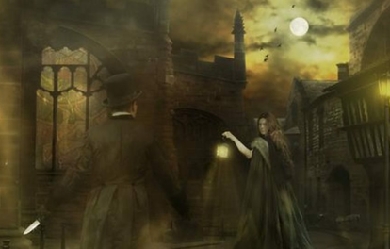

I am an enthusiastic scholar of American, Irish, and English history, Victorian literature, myths, legends, folklore, and Pagan religions. My prose and poetry are generally Gothic in theme and usually set in historical periods. My favourite authors are Edgar Allen Poe, Samuel Clemens, Charles Dickens, Henry James, Sir Arthur Conan Doyle, H.P. Lovecraft, M. R. James, Washington Irving, and Oscar Wilde, just to name a few, and my favourite poets are Keats, Byron, Yeats, Wordsworth, Tennyson, and Longfellow. I have three books of poetry currently on the market, three Gothic novels, one anthology of six horror stories, and several novellas and novelettes. I was raised in Wheatridge, Colorado and attended The University of Colorado at Denver. I currently live in Corvallis, Montana in the great Pacific Northwest.

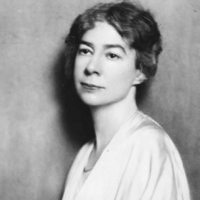
Sara Teasdale (August 8, 1884 – January 29, 1933) was an American lyric poet. She was born Sarah Trevor Teasdale in St. Louis, Missouri, and used the name Sara Teasdale Filsinger after her marriage in 1914. She had such poor health for so much of her childhood, home schooled until age 9, that it was only at age 10 that she was well enough to begin school. She started at Mary Institute in 1898, but switched to Hosmer Hall in 1899, graduating in 1903. I Shall Not Care WHEN I am dead and over me bright April Shakes out her rain-drenched hair, Tho' you should lean above me broken-hearted, I shall not care. I shall have peace, as leafy trees are peaceful When rain bends down the bough, And I shall be more silent and cold-hearted Than you are now.


Born and raised in Soweto. God, my family and sports and music are the most important things in my life. I started writing poems as a hobby and then developed a greater liking for it. The poems I write are based on the emotions I feel at that time, but also sometimes they are inspired by music & movies. I write poetry to entertain and inspire other people to better themselves and that through them, they will learn & most importantly, know how strong and mighty God is.
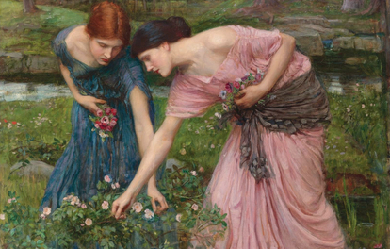
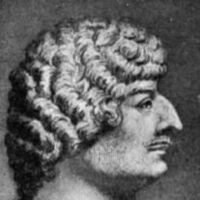
Robert Herrick (baptized 24 August 1591 – buried 15 October 1674) was a 17th-century English poet. Born in Cheapside, London, he was the seventh child and fourth son of Julia Stone and Nicholas Herrick, a prosperous goldsmith. His father died in a fall from a fourth-floor window in November 1592, when Robert was a year old (whether this was suicide remains unclear). The tradition that Herrick received his education at Westminster is groundless. It is more likely that (like his uncle's children) he attended The Merchant Taylors' School. In 1607 he became apprenticed to his uncle, Sir William Herrick, who was a goldsmith and jeweler to the king. The apprenticeship ended after only six years when Herrick, at age twenty-two, matriculated at St John's College, Cambridge. He graduated in 1617. Robert Herrick became a member of the Sons of Ben, a group centered upon an admiration for the works of Ben Jonson. Herrick wrote at least five poems to Jonson. Herrick took holy orders in 1623, and in 1629 he became vicar of Dean Prior in Devonshire. In 1647, in the wake of the English Civil War, Herrick was ejected from his vicarage for refusing the Solemn League and Covenant. He then returned to London, living in Westminster and depending on the charity of his friends and family. He spent some time preparing his lyric poems for publication, and had them printed in 1648 under the title Hesperides; or the Works both Human and Divine of Robert Herrick, with a dedication to the Prince of Wales. When King Charles II was restored to the throne in 1660, Herrick petitioned for his own restoration to his living. Perhaps King Charles felt kindly towards this genial man, who had written verses celebrating the births of both Charles II and his brother James before the Civil War. Herrick became the vicar of Dean Prior again in the summer of 1662 and lived there until his death in October 1674, at the ripe age of 83. His date of death is not known, but he was buried on 15 October. Herrick was a bachelor all his life, and many of the women he names in his poems are thought to be fictional. Poetic style and stature Herrick wrote over 2,500 poems, about half of which appear in his major work, Hesperides. Hesperides also includes the much shorter Noble Numbers, his first book, of spiritual works, first published in 1647. He is well-known for his style and, in his earlier works, frequent references to lovemaking and the female body. His later poetry was more of a spiritual and philosophical nature. Among his most famous short poetical sayings are the unique monometers, such as "Thus I / Pass by / And die,/ As one / Unknown / And gone." Herrick sets out his subject-matter in the poem he printed at the beginning of his collection, The Argument of his Book. He dealt with English country life and its seasons, village customs, complimentary poems to various ladies and his friends, themes taken from classical writings and a solid bedrock of Christian faith, not intellectualized but underpinning the rest. Herrick never married, and none of his love-poems seem to connect directly with any one beloved woman. He loved the richness of sensuality and the variety of life, and this is shown vividly in such poems as Cherry-ripe, Delight in Disorder and Upon Julia’s Clothes. The over-riding message of Herrick’s work is that life is short, the world is beautiful, love is splendid, and we must use the short time we have to make the most of it. This message can be seen clearly in To the Virgins, to make much of Time, To Daffodils, To Blossoms and Corinna going a-Maying, where the warmth and exuberance of what seems to have been a kindly and jovial personality comes over strongly. The opening stanza in one of his more famous poems, "To the Virgins, to Make Much of Time", is as follows: Gather ye rosebuds while ye may, Old Time is still a-flying; And this same flower that smiles today, Tomorrow will be dying. This poem is an example of the carpe diem genre; the popularity of Herrick's poems of this kind helped revive the genre. His poems were not widely popular at the time they were published. His style was strongly influenced by Ben Jonson, by the classical Roman writers, and by the poems of the late Elizabethan era. This must have seemed quite old-fashioned to an audience whose tastes were tuned to the complexities of the metaphysical poets such as John Donne and Andrew Marvell. His works were rediscovered in the early nineteenth century, and have been regularly printed ever since. The Victorian poet Swinburne described Herrick as the greatest song writer...ever born of English race. It is certainly true that despite his use of classical allusions and names, his poems are easier for modern readers to understand than those of many of his contemporaries. Robert Herrick is a major character in Rose Macaulay's 1932 historical novel, They Were Defeated. References Wikipedia - http://en.wikipedia.org/wiki/Robert_Herrick_(poet)
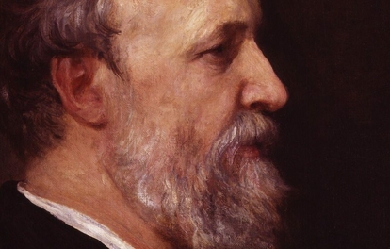
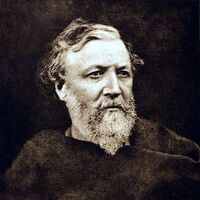
Robert Browning was born on May 7, 1812, in Camberwell, England. His mother was an accomplished pianist and a devout evangelical Christian. His father, who worked as a bank clerk, was also an artist, scholar, antiquarian, and collector of books and pictures. His rare book collection of more than 6,000 volumes included works in Greek, Hebrew, Latin, French, Italian, and Spanish. Much of Browning's education came from his well-read father. It is believed that he was already proficient at reading and writing by the age of five. A bright and anxious student, Browning learned Latin, Greek, and French by the time he was fourteen. From fourteen to sixteen he was educated at home, attended to by various tutors in music, drawing, dancing, and horsemanship.

I've been writing all my life, since I could read and hold a pen. Its only been in the last couple of years that friends and writing colleagues have encouraged me to submit work for publication. Slowly I've been finding success in getting work recognised in magazines and journals and at spoken word events. I'll post here as regularly as I can, posting poems that are new that I like or have achieved some success. I hope the writing engenders some understanding and encouragement #poetatheart
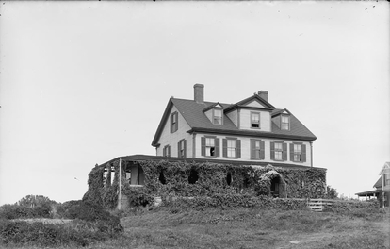
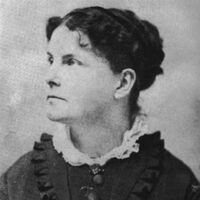
Celia Laighton Thaxter (June 29, 1835 – August 25, 1894) was an American writer of poetry and stories. She was born in Portsmouth, New Hampshire. Thaxter grew up in the Isles of Shoals, first on White Island, where her father, Thomas Laighton, was a lighthouse keeper, and then on Smuttynose and Appledore Islands. When she was sixteen, she married Levi Thaxter and moved to the mainland, residing first in Watertown, Massachusetts at a property his father owned. Celia died suddenly while on Appledore Island. She was buried not far from her cottage, which unfortunately burned in the 1914 fire that destroyed The Appledore House hotel.
Illuminator Colin Goedecke guides The Poetisphere, thepoetisphere.com, an oasis of regenesis for seekers of greater aliveness and possibility. He’s also the longtime host & voice of the live, free, weekly Floating Poetry Broadcast series of evocative and contemplative cultural commentary, poetry, shared inquiry and discovery. Findable on YouTube. And serves as Poet Laureate of the Truce Foundation of the United States, since 2017, where he’s been a lead cultural contributor to the International Olympic Games and The America’s Cup. Among his daily touchstones are the words of Ralph Waldo Emerson, "Live in the sunshine, swim in the sea, drink the wild air."And those of poet Mary Oliver, from the end of her poem The Summer Day, "Tell me, what is it you plan to do with your one wild and precious life.” Living in vibrant and soulful daily conversation with life, self and the living world, and encouraging others to live there, is why he’s here.
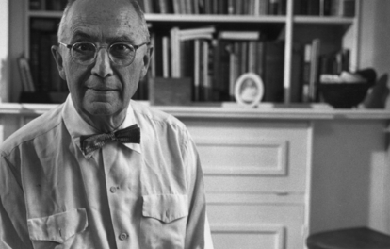
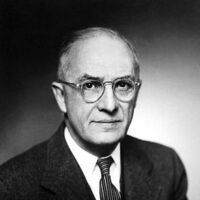
William Carlos Williams (September 17, 1883 – March 4, 1963) was an American poet closely associated with modernism and Imagism. He was also a pediatrician and general practitioner of medicine with a medical degree from the University of Pennsylvania School of Medicine. Williams "worked harder at being a writer than he did at being a physician" but excelled at both. Although his primary occupation was as a family doctor, Williams had a successful literary career as a poet. In addition to poetry (his main literary focus), he occasionally wrote short stories, plays, novels, essays, and translations. He practiced medicine by day and wrote at night. Early in his career, he briefly became involved in the Imagist movement through his friendships with Ezra Pound and H.D. (also known as Hilda Doolittle, another well-known poet whom he befriended while attending the University of Pennsylvania), but soon he began to develop opinions that differed from those of his poet/friends.

Rare & Strange...Lover of Wine, Sports, Skulls, The Sun, All Things Fast, Giving & Taking Chances, People Watching, Music, Poetry, Animals, Dialogue, Sensuality, Sexuality, Passion & Passionate People, Confidence, Art, Movies, Conversations, Romance, Philosophy & Johnny Depp.....Watching movies that make you think - like A waking life or with great dialogue. It's all about the lighting... What makes us different, you & I? I'm on my life mission of seeking the strange, yet the similar, the one who will make me think, make me not think, who will drive me wild with words, passion and love. I wear my heart on my sleeve and won't stop to let the world take away my spirit. I refuse to settle even if it means I never stop ...but I know he's out there my eclectic twin soul who will love adventure, random rants, giving and caring for others, fitting in between the cracks with me and standing out in the crowd too. Intelligent and Cultured , both city and country lover, who will pack up run through the mountains taking random photos of cemeteries and visions in the clouds, who will jump on a horse and ride a wild ride with me...a best friend, a soul mate, the other half who inspires me and I inspire he and long talks with large glasses of wine and endless nights in electric passion ...tantric, twisted, non-judging just accepting each other completely, swallowing each other ...
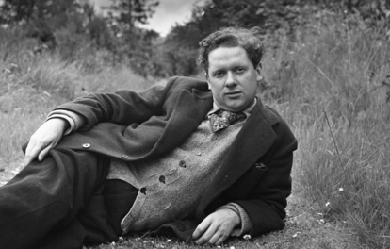

Dylan Marlais Thomas (27 October 1914 – 9 November 1953) was a Welsh poet and writer who wrote exclusively in English. In addition to poetry, he wrote short stories and scripts for film and radio, which he often performed himself. His public readings, particularly in America, won him great acclaim; his sonorous voice with a subtle Welsh lilt became almost as famous as his works. His best-known works include the “play for voices” Under Milk Wood and the celebrated villanelle for his dying father, “Do not go gentle into that good night”. Appreciative critics have also noted the craftsmanship and compression of poems such as “In my Craft or Sullen Art”, and the rhapsodic lyricism in “And death shall have no dominion” and “Fern Hill”.

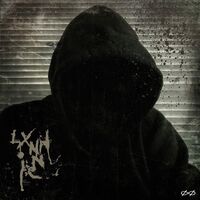
Lonnie Rutledge is a prolific artist, songwriter, and poet from the United States. He is known for his peculiar methods, intense concepts, experimental writing and often demented production. He has described his style as 'Schizodelic'; a term he is noted for coining in the mid 1990's. Lxnnnie has released many albums under assorted aliases in multiple genres of music. He has had songs featured in major motion pictures, produced music for a number of commercials, designed album covers and published a book of poetry.
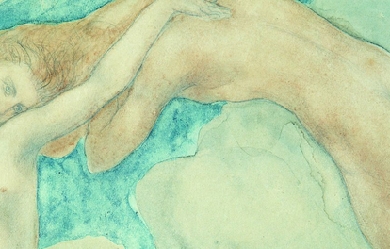
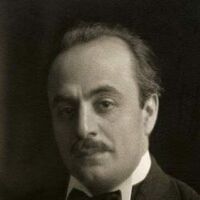
Khalil Gibran (Arabic pronunciation: [xaˈliːl ʒiˈbrɑːn]) (January 6, 1883 - April 10, 1931); born Gubran Khalil Gubran, was a Lebanese-American artist, poet, and writer. Born in the town of Bsharri in modern-day Lebanon (then part of the Ottoman Mount Lebanon mutasarrifate), as a young man he emigrated with his family to the United States where he studied art and began his literary career. In the Arab world, Gibran is regarded as a literary and political rebel. His Romantic style was at the heart of a renaissance in modern Arabic literature, especially prose poetry, breaking away from the classical school. In Lebanon, he is still celebrated as a literary hero. He is chiefly known in the English-speaking world for his 1923 book The Prophet, an early example of inspirational fiction including a series of philosophical essays written in poetic English prose. The book sold well despite a cool critical reception, gaining popularity in the 1930s and again especially in the 1960s counterculture. Gibran is the third best-selling poet of all time, behind Shakespeare and Lao-Tzu. In academic contexts his name is often spelled Jubrān Khalīl Jubrān,:217:255 Jibrān Khalīl Jibrān,:217:559 or Jibrān Xalīl Jibrān;:189 Arabic جبران خليل جبران , January 6, 1883 – April 10, 1931) also known as Kahlil Gibran, In Lebanon Gibran was born to a Maronite Catholic family from the historical town of Bsharri in northern Lebanon. His mother Kamila, daughter of a priest, was thirty when he was born; his father Khalil was her third husband. As a result of his family's poverty, Gibran received no formal schooling during his youth. However, priests visited him regularly and taught him about the Bible, as well as the Arabic and Syriac languages. Gibran's father initially worked in an apothecary but, with gambling debts he was unable to pay, he went to work for a local Ottoman-appointed administrator. Around 1891, extensive complaints by angry subjects led to the administrator being removed and his staff being investigated. Gibran's father was imprisoned for embezzlement, and his family's property was confiscated by the authorities. Kamila Gibran decided to follow her brother to the United States. Although Gibran's father was released in 1894, Kamila remained resolved and left for New York on June 25, 1895, taking Khalil, his younger sisters Mariana and Sultana, and his elder half-brother Peter (in Arabic, Butrus). In the United States The Gibrans settled in Boston's South End, at the time the second largest Syrian/Lebanese-American community in the United States. Due to a mistake at school, he was registered as Kahlil Gibran. His mother began working as a seamstress peddler, selling lace and linens that she carried from door to door. Gibran started school on September 30, 1895. School officials placed him in a special class for immigrants to learn English. Gibran also enrolled in an art school at a nearby settlement house. Through his teachers there, he was introduced to the avant-garde Boston artist, photographer, and publisher Fred Holland Day, who encouraged and supported Gibran in his creative endeavors. A publisher used some of Gibran's drawings for book covers in 1898. Gibran's mother, along with his elder brother Peter, wanted him to absorb more of his own heritage rather than just the Western aesthetic culture he was attracted to, so at the age of fifteen, Gibran returned to his homeland to study at a Maronite-run preparatory school and higher-education institute in Beirut, called Al-Hikma (The Wisdom). He started a student literary magazine with a classmate and was elected "college poet". He stayed there for several years before returning to Boston in 1902, coming through Ellis Island (a second time) on May 10. Two weeks before he got back, his sister Sultana died of tuberculosis at the age of 14. The next year, Peter died of the same disease and his mother died of cancer. His sister Marianna supported Gibran and herself by working at a dressmaker’s shop. Art and poetry Gibran held his first art exhibition of his drawings in 1904 in Boston, at Day's studio. During this exhibition, Gibran met Mary Elizabeth Haskell, a respected headmistress ten years his senior. The two formed an important friendship that lasted the rest of Gibran’s life. Though publicly discreet, their correspondence reveals that the two were lovers. In fact, Gibran twice proposed to her but marriage was not possible in the face of her family's conservatism. Haskell influenced not only Gibran’s personal life, but also his career. She became his editor, and introduced him to Charlotte Teller, a journalist,and Emilie Michel (Micheline), a French teacher, who accepted to pose for him as a model and became close friends. In 1908, Gibran went to study art in Paris for two years. While there he met his art study partner and lifelong friend Youssef Howayek. While most of Gibran's early writings were in Arabic, most of his work published after 1918 was in English. His first book for the publishing company Alfred A. Knopf, in 1918, was The Madman, a slim volume of aphorisms and parables written in biblical cadence somewhere between poetry and prose. Gibran also took part in the New York Pen League, also known as the "immigrant poets" (al-mahjar), alongside important Lebanese-American authors such as Ameen Rihani, Elia Abu Madi and Mikhail Naimy, a close friend and distinguished master of Arabic literature, whose descendants Gibran declared to be his own children, and whose nephew, Samir, is a godson of Gibran's. Much of Gibran's writings deal with Christianity, especially on the topic of spiritual love. But his mysticism is a convergence of several different influences : Christianity, Islam, Sufism, Hinduism and theosophy. He wrote : "You are my brother and I love you. I love you when you prostrate yourself in your mosque, and kneel in your church and pray in your synagogue. You and I are sons of one faith - the Spirit." Juliet Thompson, one of Gibran's acquaintances, reported several anecdotes relating to Gibran: She recalls Gibran met `Abdu'l-Bahá, the leader of the Bahá’í Faith at the time of his visit to the United States, circa 1911–1912. Barbara Young, in "This Man from Lebanon: A Study of Khalil Gibran", records Gibran was unable to sleep the night before meeting `Abdu'l-Bahá who sat for a pair of portraits. Thompson reports Gibran saying that all the way through writing of "Jesus, The Son of Man", he thought of `Abdu'l-Bahá. Years later, after the death of `Abdu'l-Bahá, there was a viewing of the movie recording of `Abdu'l-Bahá – Gibran rose to talk and in tears, proclaimed an exalted station of `Abdu'l-Bahá and left the event weeping. His poetry is notable for its use of formal language, as well as insights on topics of life using spiritual terms. Gibran's best-known work is The Prophet, a book composed of twenty-six poetic essays. Its popularity grew markedly during the 1960s with the American counterculture and then with the flowering of the New Age movements. It has remained popular with these and with the wider population to this day. Since it was first published in 1923, The Prophet has never been out of print. Having been translated into more than forty languages, it was one of the bestselling books of the twentieth century in the United States. One of his most notable lines of poetry is from "Sand and Foam" (1926), which reads: "Half of what I say is meaningless, but I say it so that the other half may reach you". This line was used by John Lennon and placed, though in a slightly altered form, into the song "Julia" from The Beatles' 1968 album The Beatles (a.k.a. "The White Album”). Drawing and painting Gibran was an accomplished artist, especially in drawing and watercolour, having attended art school in Paris from 1908 to 1910, pursuing a symbolist and romantic style over then up-and-coming realism. His more than 700 images include portraits of his friends WB Yeats, Carl Jung and August Rodin. A possible Gibran painting was the subject of a June 2012 episode of the PBS TV series History Detectives. Political thought Gibran was by no means a politician. He used to say : "I am not a politician, nor do I wish to become one" and "Spare me the political events and power struggles, as the whole earth is my homeland and all men are my fellow countrymen". Nevertheless, Gibran called for the adoption of Arabic as a national language of Syria, considered from a geographic point of view, not as a political entity. When Gibran met `Abdu'l-Bahá in 1911–12, who traveled to the United States partly to promote peace, Gibran admired the teachings on peace but argued that "young nations like his own" be freed from Ottoman control. Gibran also wrote the famous "Pity The Nation" poem during these years, posthumously published in The Garden of the Prophet. When the Ottomans were finally driven out of Syria during World War I, Gibran's exhilaration was manifested in a sketch called "Free Syria" which appeared on the front page of al-Sa'ih's special "victory" edition. Moreover, in a draft of a play, still kept among his papers, Gibran expressed great hope for national independence and progress. This play, according to Khalil Hawi, "defines Gibran's belief in Syrian nationalism with great clarity, distinguishing it from both Lebanese and Arab nationalism, and showing us that nationalism lived in his mind, even at this late stage, side by side with internationalism.” Death and legacy Gibran died in New York City on April 10, 1931: the cause was determined to be cirrhosis of the liver and tuberculosis. Before his death, Gibran expressed the wish that he be buried in Lebanon. This wish was fulfilled in 1932, when Mary Haskell and his sister Mariana purchased the Mar Sarkis Monastery in Lebanon, which has since become the Gibran Museum. The words written next to Gibran's grave are "a word I want to see written on my grave: I am alive like you, and I am standing beside you. Close your eyes and look around, you will see me in front of you ...." Gibran willed the contents of his studio to Mary Haskell. There she discovered her letters to him spanning twenty-three years. She initially agreed to burn them because of their intimacy, but recognizing their historical value she saved them. She gave them, along with his letters to her which she had also saved, to the University of North Carolina at Chapel Hill Library before she died in 1964. Excerpts of the over six hundred letters were published in "Beloved Prophet" in 1972. Mary Haskell Minis (she wed Jacob Florance Minis in 1923) donated her personal collection of nearly one hundred original works of art by Gibran to the Telfair Museum of Art in Savannah, Georgia in 1950. Haskell had been thinking of placing her collection at the Telfair as early as 1914. In a letter to Gibran, she wrote "I am thinking of other museums ... the unique little Telfair Gallery in Savannah, Ga., that Gari Melchers chooses pictures for. There when I was a visiting child, form burst upon my astonished little soul." Haskell's gift to the Telfair is the largest public collection of Gibran’s visual art in the country, consisting of five oils and numerous works on paper rendered in the artist’s lyrical style, which reflects the influence of symbolism. The future American royalties to his books were willed to his hometown of Bsharri, to be "used for good causes”. Works In Arabic: * Nubthah fi Fan Al-Musiqa (Music, 1905) * Ara'is al-Muruj (Nymphs of the Valley, also translated as Spirit Brides and Brides of the Prairie, 1906) * al-Arwah al-Mutamarrida (Rebellious Spirits, 1908) * al-Ajniha al-Mutakassira (Broken Wings, 1912) * Dam'a wa Ibtisama (A Tear and A Smile, 1914) * al-Mawakib (The Processions, 1919) * al-‘Awāsif (The Tempests, 1920) * al-Bada'i' waal-Tara'if (The New and the Marvellous, 1923) In English, prior to his death: * The Madman (1918) (downloadable free version) * Twenty Drawings (1919) * The Forerunner (1920) * The Prophet, (1923) * Sand and Foam (1926) * Kingdom of the Imagination (1927) * Jesus, The Son of Man (1928) * The Earth Gods (1931) Posthumous, in English: * The Wanderer (1932) * The Garden of the Prophet (1933, Completed by Barbara Young) * Lazarus and his Beloved (Play, 1933) Collections: * Prose Poems (1934) * Secrets of the Heart (1947) * A Treasury of Kahlil Gibran (1951) * A Self-Portrait (1959) * Thoughts and Meditations (1960) * A Second Treasury of Kahlil Gibran (1962) * Spiritual Sayings (1962) * Voice of the Master (1963) * Mirrors of the Soul (1965) * Between Night & Morn (1972) * A Third Treasury of Kahlil Gibran (1975) * The Storm (1994) * The Beloved (1994) * The Vision (1994) * Eye of the Prophet (1995) * The Treasured Writings of Kahlil Gibran (1995) Other: * Beloved Prophet, The love letters of Khalil Gibran and Mary Haskell, and her private journal (1972, edited by Virginia Hilu) Memorials and honors * Lebanese Ministry of Post and Telecommunications published a stamp in his honor in 1971. * Gibran Museum in Bsharri, Lebanon * Gibran Khalil Gibran Garden, Beirut, Lebanon * Gibran Khalil Gibran collectin, Soumaya Museum, Mexico. * Kahlil Gibran Street, Ville Saint-Laurent, Quebec, Canada inaugurated on 27 Sept. 2008 on occasion of the 125th anniversary of his birth. * Gibran Kahlil Gibran Skiing Piste, The Cedars Ski Resort, Lebanon * Kahlil Gibran Memorial Garden in Washington, D.C., dedicated in 1990 * The Kahlil Gibran Chair for Values and Peace, University of Maryland, currently held by Suheil Bushrui * Pavilion K. Gibran at École Pasteur in Montréal, Quebec, Canada * Gibran Memorial Plaque in Copley Square, Boston, Massachusetts see Kahlil Gibran (sculptor). * Khalil Gibran International Academy, a public high school in Brooklyn, NY, opened in September 2007 * Khalil Gibran Park (Parcul Khalil Gibran) in Bucharest, Romania * Gibran Kalil Gibran sculpture on a marble pedestal indoors at Arab Memorial building at Curitiba, Paraná, Brazil * Gibran Khalil Gibran Memorial, in front of Plaza de las Naciones. Buenos Aires. References Wikipedia - http://en.wikipedia.org/wiki/Khalil_Gibran
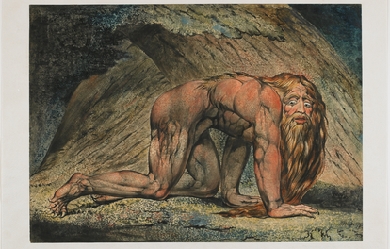
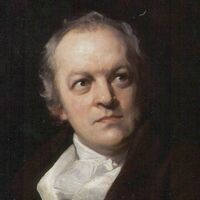
William Blake (28 November 1757 – 12 August 1827) was an English poet, painter, and printmaker. Largely unrecognised during his lifetime, Blake is now considered a seminal figure in the history of both the poetry and visual arts of the Romantic Age. His prophetic poetry has been said to form “what is in proportion to its merits the least read body of poetry in the English language”. His visual artistry has led one contemporary art critic to proclaim him “far and away the greatest artist Britain has ever produced”. Although he lived in London his entire life except for three years spent in Felpham he produced a diverse and symbolically rich corpus, which embraced the imagination as “the body of God”, or “Human existence itself”.
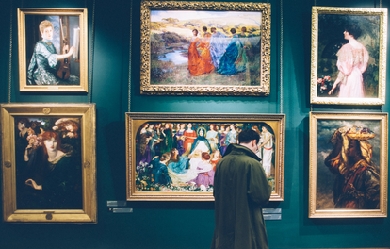
Hi!! I don't have much to say but I have tons to share..... I am an Hyper-Sensitive Empath with highly emotional and perspective style writing. I Like sometimes What I see and How I feel So I Write If I wanted that moment to stay. So I write What I see, and like and had glimpse or ample of feelings for. Hope you get Along with this Intellectual Journey of Building, Love, Life, Friendships, Moments Smiles and More.
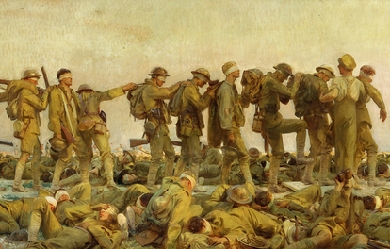
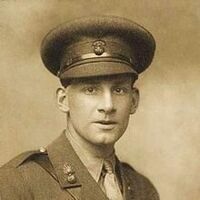
Siegfried Loraine Sassoon (8 September 1886 – 1 September 1967) was an English poet, author and soldier. Decorated for bravery on the Western Front, he became one of the leading poets of the First World War. His poetry both described the horrors of the trenches, and satirised the patriotic pretensions of those who, in Sassoon's view, were responsible for a vainglorious war. He later won acclaim for his prose work, notably his three-volume fictionalised autobiography, collectively known as the "Sherston Trilogy". Motivated by patriotism, Sassoon joined the British Army just as the threat of World War I was realised, and was in service with the Sussex Yeomanry on the day the United Kingdom declared war (4 August 1914). He broke his arm badly in a riding accident and was put out of action before even leaving England, spending the spring of 1915 convalescing.

I started dabbling at age 13, and after a while, I was writing full poems, however, I only have poetry from when I was 16 and up. I am now 30, and I have found that it is so much easier to say things through poetry than it is to verbalize them. I draw inspiration for my poetry from writers, musicians, movies, daily interactions, my faith, and much more. As far as writers go, when I was younger I got introduced to Langston Hughes, and I have learned to take from his style of writing. I also enjoy some good old Shakespeare every once in a while. Most of my influence, however, comes from music; I draw my influence from genres that include but are not limited to, hip-hop, rock, and country. Another thing that really impacts my poetry are events that have taken place in my life. Movie characters and themes also have a chance to have their fair share of influence in my poetry. I am a spiritual person, so, beneath most of my poems stories, there is a spiritual undertone. People can create all sorts of art without having to fabricate who they are, and without compromising who they are as a person; it's being able to take from other peoples experiences and write about them, based on the writer's interpretation, that can set a writer apart from others. I write mainly Free Verse poetry, because to me poetry is a lot of self-expression, and if I were to follow the set guidelines of a certain type of poetry, I would then be forfeiting my creative license. Sometimes, however, I like to take from certain styles of poetry, especially when I am trying to convey a particular emotion, for example, I not only write Free Verse but, I have learned to take from styles, such as Blank Verse & Limericks. I have a friend who said this, "If there is one thing that I have learned about writing over the years it is that the best work comes from writing without the audience in mind." I find this quote to be accurate for not only my writing but for writing in general. Love y'all!
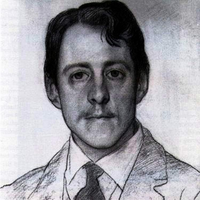
Robert Laurence Binyon, CH (10 August 1869– 10 March 1943) was an English poet, dramatist and art scholar. His most famous work, For the Fallen, is well known for being used in Remembrance Sunday services. Pre-war life Laurence Binyon was born in Lancaster, Lancashire, England. His parents were Frederick Binyon, and Mary Dockray. Mary’s father, Robert Benson Dockray, was the main engineer of the London and Birmingham Railway. The family were Quakers. Binyon studied at St Paul’s School, London. Then he read Classics (Honour Moderations) at Trinity College, Oxford, where he won the Newdigate Prize for poetry in 1891. Immediately after graduating in 1893, Binyon started working for the Department of Printed Books of the British Museum, writing catalogues for the museum and art monographs for himself. In 1895 his first book, Dutch Etchers of the Seventeenth Century, was published. In that same year, Binyon moved into the Museum’s Department of Prints and Drawings, under Campbell Dodgson. In 1909, Binyon became its Assistant Keeper, and in 1913 he was made the Keeper of the new Sub-Department of Oriental Prints and Drawings. Around this time he played a crucial role in the formation of Modernism in London by introducing young Imagist poets such as Ezra Pound, Richard Aldington and H.D. to East Asian visual art and literature. Many of Binyon’s books produced while at the Museum were influenced by his own sensibilities as a poet, although some are works of plain scholarship– such as his four-volume catalogue of all the Museum’s English drawings, and his seminal catalogue of Chinese and Japanese prints. In 1904 he married historian Cicely Margaret Powell, and the couple had three daughters. During those years, Binyon belonged to a circle of artists, as a regular patron of the Wiener Cafe of London. His fellow intellectuals there were Ezra Pound, Sir William Rothenstein, Walter Sickert, Charles Ricketts, Lucien Pissarro and Edmund Dulac. Binyon’s reputation before the war was such that, on the death of the Poet Laureate Alfred Austin in 1913, Binyon was among the names mentioned in the press as his likely successor (others named included Thomas Hardy, John Masefield and Rudyard Kipling; the post went to Robert Bridges). For the Fallen Moved by the opening of the Great War and the already high number of casualties of the British Expeditionary Force, in 1914 Laurence Binyon wrote his For the Fallen, with its Ode of Remembrance, as he was visiting the cliffs on the north Cornwall coast, either at Polzeath or at Portreath (at each of which places there is a plaque commemorating the event, though Binyon himself mentioned Polzeath in a 1939 interview. The confusion may be related to Porteath Farm being near Polzeath). The piece was published by The Times newspaper in September, when public feeling was affected by the recent Battle of Marne. Today Binyon’s most famous poem, For the Fallen, is often recited at Remembrance Sunday services in the UK; is an integral part of Anzac Day services in Australia and New Zealand and of the 11 November Remembrance Day services in Canada. The third and fourth verses of the poem (although often just the fourth) have thus been claimed as a tribute to all casualties of war, regardless of nation. They went with songs to the battle, they were young. Straight of limb, true of eyes, steady and aglow. They were staunch to the end against odds uncounted, They fell with their faces to the foe. They shall grow not old, as we that are left grow old: Age shall not weary them, nor the years condemn. At the going down of the sun and in the morning, We will remember them. They mingle not with their laughing comrades again; They sit no more at familiar tables of home; They have no lot in our labour of the day-time; They sleep beyond England’s foam Three of Binyon’s poems, including “For the Fallen”, were set by Sir Edward Elgar in his last major orchestra/choral work, The Spirit of England. In 1915, despite being too old to enlist in the First World War, Laurence Binyon volunteered at a British hospital for French soldiers, Hôpital Temporaire d’Arc-en-Barrois, Haute-Marne, France, working briefly as a hospital orderly. He returned in the summer of 1916 and took care of soldiers taken in from the Verdun battlefield. He wrote about his experiences in For Dauntless France (1918) and his poems, “Fetching the Wounded” and “The Distant Guns”, were inspired by his hospital service in Arc-en-Barrois. Artists Rifles, a CD audiobook published in 2004, includes a reading of For the Fallen by Binyon himself. The recording itself is undated and appeared on a 78 rpm disc issued in Japan. Other Great War poets heard on the CD include Siegfried Sassoon, Edmund Blunden, Robert Graves, David Jones and Edgell Rickword. Post-war life After the war, he returned to the British Museum and wrote numerous books on art; in particular on William Blake, Persian art, and Japanese art. His work on ancient Japanese and Chinese cultures offered strongly contextualised examples that inspired, among others, the poets Ezra Pound and W. B. Yeats. His work on Blake and his followers kept alive the then nearly-forgotten memory of the work of Samuel Palmer. Binyon’s duality of interests continued the traditional interest of British visionary Romanticism in the rich strangeness of Mediterranean and Oriental cultures. In 1931, his two volume Collected Poems appeared. In 1932, Binyon rose to be the Keeper of the Prints and Drawings Department, yet in 1933 he retired from the British Museum. He went to live in the country at Westridge Green, near Streatley (where his daughters also came to live during the Second World War). He continued writing poetry. In 1933–1934, Binyon was appointed Norton Professor of Poetry at Harvard University. He delivered a series of lectures on The Spirit of Man in Asian Art, which were published in 1935. Binyon continued his academic work: in May 1939 he gave the prestigious Romanes Lecture in Oxford on Art and Freedom, and in 1940 he was appointed the Byron Professor of English Literature at University of Athens. He worked there until forced to leave, narrowly escaping the German invasion of Greece in April 1941 . He was succeeded by Lord Dunsany, who held the chair in 1940-1941. Binyon had been friends with Ezra Pound since around 1909, and in the 1930s the two became especially close; Pound affectionately called him “BinBin”, and assisted Binyon with his translation of Dante. Another protégé was Arthur Waley, whom Binyon employed at the British Museum. Between 1933 and 1943, Binyon published his acclaimed translation of Dante’s Divine Comedy in an English version of terza rima, made with some editorial assistance by Ezra Pound. Its readership was dramatically increased when Paolo Milano selected it for the “The Portable Dante” in Viking’s Portable Library series. Binyon significantly revised his translation of all three parts for the project, and the volume went through three major editions and eight printings (while other volumes in the same series went out of print) before being replaced by the Mark Musa translation in 1981. At his death he was also working on a major three-part Arthurian trilogy, the first part of which was published after his death as The Madness of Merlin (1947). He died in Dunedin Nursing Home, Bath Road, Reading, on 10 March 1943 after an operation. A funeral service was held at Trinity College Chapel, Oxford, on 13 March 1943. There is a slate memorial in St. Mary’s Church, Aldworth, where Binyon’s ashes were scattered. On 11 November 1985, Binyon was among 16 Great War poets commemorated on a slate stone unveiled in Westminster Abbey’s Poets’ Corner. The inscription on the stone quotes a fellow Great War poet, Wilfred Owen. It reads: “My subject is War, and the pity of War. The Poetry is in the pity.” Daughters His three daughters Helen, Margaret and Nicolete became artists. Helen Binyon (1904–1979) studied with Paul Nash and Eric Ravilious, illustrating many books for the Oxford University Press, and was also a marionettist. She later taught puppetry and published Puppetry Today (1966) and Professional Puppetry in England (1973). Margaret Binyon wrote children’s books, which were illustrated by Helen. Nicolete, as Nicolete Gray, was a distinguished calligrapher and art scholar. Bibliography of key works Poems and verse * Lyric Poems (1894) * Porphyrion and other Poems (1898) * Odes (1901) * Death of Adam and Other Poems (1904) * London Visions (1908) * England and Other Poems (1909) * “For The Fallen”, The Times, 21 September 1914 * Winnowing Fan (1914) * The Anvil (1916) * The Cause (1917) * The New World: Poems (1918) * The Idols (1928) * Collected Poems Vol 1: London Visions, Narrative Poems, Translations. (1931) * Collected Poems Vol 2: Lyrical Poems. (1931) * The North Star and Other Poems (1941) * The Burning of the Leaves and Other Poems (1944) * The Madness of Merlin (1947) In 1915 Cyril Rootham set “For the Fallen” for chorus and orchestra, first performed in 1919 by the Cambridge University Musical Society conducted by the composer. Edward Elgar set to music three of Binyon’s poems ("The Fourth of August", “To Women”, and “For the Fallen”, published within the collection “The Winnowing Fan”) as The Spirit of England, Op. 80, for tenor or soprano solo, chorus and orchestra (1917). English arts and myth * Dutch Etchers of the Seventeenth Century (1895), Binyon’s first book on painting * John Crone and John Sell Cotman (1897) * William Blake: Being all his Woodcuts Photographically Reproduced in Facsimile (1902) * English Poetry in its relation to painting and the other arts (1918) * Drawings and Engravings of William Blake (1922) * Arthur: A Tragedy (1923) * The Followers of William Blake (1925) * The Engraved Designs of William Blake (1926) * Landscape in English Art and Poetry (1931) * English Watercolours (1933) * Gerard Hopkins and his influence (1939) * Art and freedom. (The Romanes lecture, delivered 25 May 1939). Oxford: The Clarendon press, (1939) Japanese and Persian arts * Painting in the Far East (1908) * Japanese Art (1909) * Flight of the Dragon (1911) * The Court Painters of the Grand Moguls (1921) * Japanese Colour Prints (1923) * The Poems of Nizami (1928) (Translation) * Persian Miniature Painting (1933) * The Spirit of Man in Asian Art (1936) Autobiography * For Dauntless France (1918) (War memoir) Biography * Botticelli (1913) * Akbar (1932) Stage plays * Brief Candles A verse-drama about the decision of Richard III to dispatch his two nephews * “Paris and Oenone”, 1906 * Godstow Nunnery: Play * Boadicea; A Play in eight Scenes * Attila: a Tragedy in Four Acts * Ayuli: a Play in three Acts and an Epilogue * Sophro the Wise: a Play for Children * (Most of the above were written for John Masefield’s theatre). * Charles Villiers Stanford wrote incidental music for Attila in 1907. References Wikipedia—https://en.wikipedia.org/wiki/Laurence_Binyon
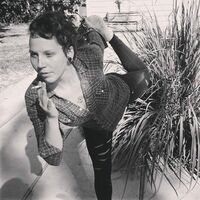
These are writings from the inner workings of a mind in constant thought about LIFE and everything it entails for the purpose of self-transcendence and with the intention to bring more understanding and healing to my own life and possibly those of others. My journey is one of self-exploration and discovery. Since my beliefs lie on the premise that we are so strongly connected to everything in existence, in getting to know myself I am getting to know the world. Learning about the world teaches me about myself. I find freedom in understanding and expression. My one true love is the paradox of questioning existence.
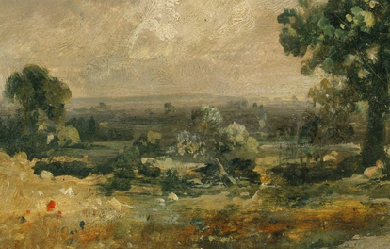
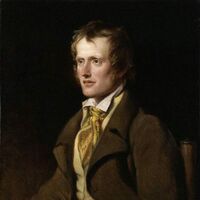
John Clare (13 July 1793 – 20 May 1864) was an English poet, the son of a farm labourer, who came to be known for his celebratory representations of the English countryside and his lamentation of its disruption. His poetry underwent a major re-evaluation in the late 20th century and he is often now considered to be among the most important 19th-century poets. His biographer Jonathan Bate states that Clare was "the greatest labouring-class poet that England has ever produced. No one has ever written more powerfully of nature, of a rural childhood, and of the alienated and unstable self”. Early life Clare was born in Helpston, six miles to the north of the city of Peterborough. In his life time, the village was in the Soke of Peterborough in Northamptonshire and his memorial calls him "The Northamptonshire Peasant Poet". Helpston now lies in the Peterborough unitary authority of Cambridgeshire. He became an agricultural labourer while still a child; however, he attended school in Glinton church until he was twelve. In his early adult years, Clare became a pot-boy in the Blue Bell public house and fell in love with Mary Joyce; but her father, a prosperous farmer, forbade her to meet him. Subsequently he was a gardener at Burghley House. He enlisted in the militia, tried camp life with Gypsies, and worked in Pickworth as a lime burner in 1817. In the following year he was obliged to accept parish relief. Malnutrition stemming from childhood may be the main culprit behind his 5-foot stature and may have contributed to his poor physical health in later life. Early poems Clare had bought a copy of Thomson's Seasons and began to write poems and sonnets. In an attempt to hold off his parents' eviction from their home, Clare offered his poems to a local bookseller named Edward Drury. Drury sent Clare's poetry to his cousin John Taylor of the publishing firm of Taylor & Hessey, who had published the work of John Keats. Taylor published Clare's Poems Descriptive of Rural Life and Scenery in 1820. This book was highly praised, and in the next year his Village Minstrel and other Poems were published. Midlife He had married Martha ("Patty") Turner in 1820. An annuity of 15 guineas from the Marquess of Exeter, in whose service he had been, was supplemented by subscription, so that Clare became possessed of £45 annually, a sum far beyond what he had ever earned. Soon, however, his income became insufficient, and in 1823 he was nearly penniless. The Shepherd's Calendar (1827) met with little success, which was not increased by his hawking it himself. As he worked again in the fields his health temporarily improved; but he soon became seriously ill. Earl FitzWilliam presented him with a new cottage and a piece of ground, but Clare could not settle in his new home. Clare was constantly torn between the two worlds of literary London and his often illiterate neighbours; between the need to write poetry and the need for money to feed and clothe his children. His health began to suffer, and he had bouts of severe depression, which became worse after his sixth child was born in 1830 and as his poetry sold less well. In 1832, his friends and his London patrons clubbed together to move the family to a larger cottage with a smallholding in the village of Northborough, not far from Helpston. However, he felt only more alienated. His last work, the Rural Muse (1835), was noticed favourably by Christopher North and other reviewers, but this was not enough to support his wife and seven children. Clare's mental health began to worsen. As his alcohol consumption steadily increased along with his dissatisfaction with his own identity, Clare's behaviour became more erratic. A notable instance of this behaviour was demonstrated in his interruption of a performance of The Merchant of Venice, in which Clare verbally assaulted Shylock. He was becoming a burden to Patty and his family, and in July 1837, on the recommendation of his publishing friend, John Taylor, Clare went of his own volition (accompanied by a friend of Taylor's) to Dr Matthew Allen's private asylum High Beach near Loughton, in Epping Forest. Taylor had assured Clare that he would receive the best medical care. Later life and death During his first few asylum years in Essex (1837–1841), Clare re-wrote famous poems and sonnets by Lord Byron. His own version of Child Harold became a lament for past lost love, and Don Juan, A Poem became an acerbic, misogynistic, sexualised rant redolent of an aging Regency dandy. Clare also took credit for Shakespeare's plays, claiming to be the Renaissance genius himself. "I'm John Clare now," the poet claimed to a newspaper editor, "I was Byron and Shakespeare formerly." In 1841, Clare left the asylum in Essex, to walk home, believing that he was to meet his first love Mary Joyce; Clare was convinced that he was married with children to her and Martha as well. He did not believe her family when they told him she had died accidentally three years earlier in a house fire. He remained free, mostly at home in Northborough, for the five months following, but eventually Patty called the doctors in. Between Christmas and New Year in 1841, Clare was committed to the Northampton General Lunatic Asylum (now St Andrew's Hospital). Upon Clare's arrival at the asylum, the accompanying doctor, Fenwick Skrimshire, who had treated Clare since 1820, completed the admission papers. To the enquiry "Was the insanity preceded by any severe or long-continued mental emotion or exertion?", Dr Skrimshire entered: "After years of poetical prosing." He remained here for the rest of his life under the humane regime of Dr Thomas Octavius Prichard, encouraged and helped to write. Here he wrote possibly his most famous poem, I Am. He died on 20 May 1864, in his 71st year. His remains were returned to Helpston for burial in St Botolph’s churchyard. Today, children at the John Clare School, Helpston's primary, parade through the village and place their 'midsummer cushions' around Clare's gravestone (which has the inscriptions "To the Memory of John Clare The Northamptonshire Peasant Poet" and "A Poet is Born not Made") on his birthday, in honour of their most famous resident. The thatched cottage where he was born was bought by the John Clare Education & Environment Trust in 2005 and is restoring the cottage to its 18th century state. Poetry In his time, Clare was commonly known as "the Northamptonshire Peasant Poet". Since his formal education was brief, Clare resisted the use of the increasingly standardised English grammar and orthography in his poetry and prose. Many of his poems would come to incorporate terms used locally in his Northamptonshire dialect, such as 'pooty' (snail), 'lady-cow' (ladybird), 'crizzle' (to crisp) and 'throstle' (song thrush). In his early life he struggled to find a place for his poetry in the changing literary fashions of the day. He also felt that he did not belong with other peasants. Clare once wrote "I live here among the ignorant like a lost man in fact like one whom the rest seemes careless of having anything to do with—they hardly dare talk in my company for fear I should mention them in my writings and I find more pleasure in wandering the fields than in musing among my silent neighbours who are insensible to everything but toiling and talking of it and that to no purpose.” It is common to see an absence of punctuation in many of Clare's original writings, although many publishers felt the need to remedy this practice in the majority of his work. Clare argued with his editors about how it should be presented to the public. Clare grew up during a period of massive changes in both town and countryside as the Industrial Revolution swept Europe. Many former agricultural workers, including children, moved away from the countryside to over-crowded cities, following factory work. The Agricultural Revolution saw pastures ploughed up, trees and hedges uprooted, the fens drained and the common land enclosed. This destruction of a centuries-old way of life distressed Clare deeply. His political and social views were predominantly conservative ("I am as far as my politics reaches 'King and Country'—no Innovations in Religion and Government say I."). He refused even to complain about the subordinate position to which English society relegated him, swearing that "with the old dish that was served to my forefathers I am content." His early work delights both in nature and the cycle of the rural year. Poems such as Winter Evening, Haymaking and Wood Pictures in Summer celebrate the beauty of the world and the certainties of rural life, where animals must be fed and crops harvested. Poems such as Little Trotty Wagtail show his sharp observation of wildlife, though The Badger shows his lack of sentiment about the place of animals in the countryside. At this time, he often used poetic forms such as the sonnet and the rhyming couplet. His later poetry tends to be more meditative and use forms similar to the folks songs and ballads of his youth. An example of this is Evening. His knowledge of the natural world went far beyond that of the major Romantic poets. However, poems such as I Am show a metaphysical depth on a par with his contemporary poets and many of his pre-asylum poems deal with intricate play on the nature of linguistics. His 'bird's nest poems', it can be argued, illustrate the self-awareness, and obsession with the creative process that captivated the romantics. Clare was the most influential poet, aside from Wordsworth to practice in an older style. Revival of interest in the twentieth century Clare was relatively forgotten during the later nineteenth century, but interest in his work was revived by Arthur Symons in 1908, Edmund Blunden in 1920 and John and Anne Tibble in their ground-breaking 1935 2-volume edition. Benjamin Britten set some of 'May' from A Shepherd's Calendar in his Spring Symphony of 1948, and included a setting of The Evening Primrose in his Five Flower Songs Copyright to much of his work has been claimed since 1965 by the editor of the Complete Poetry (OUP, 9 vols., 1984–2003), Professor Eric Robinson though these claims were contested. Recent publishers have refused to acknowledge the claim (especially in recent editions from Faber and Carcanet) and it seems the copyright is now defunct. The John Clare Trust purchased Clare Cottage in Helpston in 2005, preserving it for future generations. In May 2007 the Trust gained £1.m of funding from the Heritage Lottery Fund and commissioned Jefferson Sheard Architects to create the new landscape design and Visitor Centre, including a cafe, shop and exhibition space. The Cottage has been restored using traditional building methods and opened to the public. The largest collection of original Clare manuscripts are housed at Peterborough Museum, where they are available to view by appointment. Since 1993, the John Clare Society of North America has organised an annual session of scholarly papers concerning John Clare at the annual Convention of the Modern Language Association of America. Poetry collections by Clare (chronological) * Poems Descriptive of Rural Life and Scenery. London, 1820. * The Village Minstrel, and Other Poems. London, 1821. * The Shepherd's Calendar with Village Stories and Other Poems. London, 1827 * The Rural Muse. London, 1835. * Sonnet. London 1841 * First Love * Snow Storm. * The Firetail. * The Badger – Time unknown References Wikipedia - http://en.wikipedia.org/wiki/John_Clare
_and_brother_Ronald_-_Google_Art_Project.jpg)
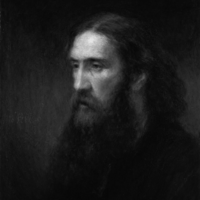
George MacDonald (10 December 1824– 18 September 1905) was a Scottish author, poet, and Christian minister. He was a pioneering figure in the field of fantasy literature and the mentor of fellow writer Lewis Carroll. His writings have been cited as a major literary influence by many notable authors including W. H. Auden, C. S. Lewis, J. R. R. Tolkien, Walter de la Mare, E. Nesbit and Madeleine L’Engle. C. S. Lewis wrote that he regarded MacDonald as his “master”: “Picking up a copy of Phantastes one day at a train-station bookstall, I began to read. A few hours later,” said Lewis, “I knew that I had crossed a great frontier.” G. K. Chesterton cited The Princess and the Goblin as a book that had “made a difference to my whole existence”. Elizabeth Yates wrote of Sir Gibbie, “It moved me the way books did when, as a child, the great gates of literature began to open and first encounters with noble thoughts and utterances were unspeakably thrilling.” Even Mark Twain, who initially disliked MacDonald, became friends with him, and there is some evidence that Twain was influenced by MacDonald. Christian author Oswald Chambers (1874–1917) wrote in Christian Disciplines, vol. 1, (pub. 1934) that “it is a striking indication of the trend and shallowness of the modern reading public that George MacDonald’s books have been so neglected”. In addition to his fairy tales, MacDonald wrote several works on Christian apologetics including several that defended his view of Christian Universalism. Early life George MacDonald was born on 10 December 1824 at Huntly, Aberdeenshire, Scotland. His father, a farmer, was one of the MacDonalds of Glen Coe, and a direct descendant of one of the families that suffered in the massacre of 1692. The Doric dialect of the Aberdeenshire area appears in the dialogue of some of his non-fantasy novels. MacDonald grew up in the Congregational Church, with an atmosphere of Calvinism. But MacDonald never felt comfortable with some aspects of Calvinist doctrine; indeed, legend has itt that when the doctrine of predestination was first explained to him, he burst into tears (although assured that he was one of the elect). Later novels, such as Robert Falconer and Lilith, show a distaste for the idea that God’s electing love is limited to some and denied to others. MacDonald graduated from the University of Aberdeen, and then went to London, studying at Highbury College for the Congregational ministry. In 1850 he was appointed pastor of Trinity Congregational Church, Arundel, but his sermons (preaching God’s universal love and the possibility that none would, ultimately, fail to unite with God) met with little favour and his salary was cut in half. Later he was engaged in ministerial work in Manchester. He left that because of poor health, and after a short sojourn in Algiers he settled in London and taught for some time at the University of London. MacDonald was also for a time editor of Good Words for the Young, and lectured successfully in the United States during 1872–1873. Work George MacDonald’s best-known works are Phantastes, The Princess and the Goblin, At the Back of the North Wind, and Lilith, all fantasy novels, and fairy tales such as “The Light Princess”, “The Golden Key”, and “The Wise Woman”. “I write, not for children,” he wrote, “but for the child-like, whether they be of five, or fifty, or seventy-five.” MacDonald also published some volumes of sermons, the pulpit not having proved an unreservedly successful venue. MacDonald also served as a mentor to Lewis Carroll (the pen-name of Rev. Charles Lutwidge Dodgson); it was MacDonald’s advice, and the enthusiastic reception of Alice by MacDonald’s many sons and daughters, that convinced Carroll to submit Alice for publication. Carroll, one of the finest Victorian photographers, also created photographic portraits of several of the MacDonald children. MacDonald was also friends with John Ruskin and served as a go-between in Ruskin’s long courtship with Rose La Touche. MacDonald was acquainted with most of the literary luminaries of the day; a surviving group photograph shows him with Tennyson, Dickens, Wilkie Collins, Trollope, Ruskin, Lewes, and Thackeray. While in America he was a friend of Longfellow and Walt Whitman. In 1877 he was given a civil list pension. From 1879 he and his family moved to Bordighera in a place much loved by British expatriates, the Riviera dei Fiori in Liguria, Italy, almost on the French border. In that locality there also was an Anglican Church, which he attended. Deeply enamoured of the Riviera, he spent there 20 years, writing almost half of his whole literary production, especially the fantasy work. In that Ligurian town MacDonald founded a literary studio named Casa Coraggio (Bravery House), which soon became one of the most renowned cultural centres of that period, well attended by British and Italian travellers, and by locals. In that house representations were often held of classic plays, and readings were given of Dante and Shakespeare. In 1900 he moved into St George’s Wood, Haslemere, a house designed for him by his son, Robert Falconer MacDonald, and the building overseen by his eldest son, Greville MacDonald. He died on 18 September 1905 in Ashtead, (Surrey). He was cremated and his ashes buried in Bordighera, in the English cemetery, along with his wife Louisa and daughters Lilia and Grace. As hinted above, MacDonald’s use of fantasy as a literary medium for exploring the human condition greatly influenced a generation of such notable authors as C. S. Lewis (who featured him as a character in his The Great Divorce), J. R. R. Tolkien, and Madeleine L’Engle. MacDonald’s non-fantasy novels, such as Alec Forbes, had their influence as well; they were among the first realistic Scottish novels, and as such MacDonald has been credited with founding the “kailyard school” of Scottish writing. His son Greville MacDonald became a noted medical specialist, a pioneer of the Peasant Arts movement, and also wrote numerous fairy tales for children. Greville ensured that new editions of his father’s works were published. Another son, Ronald MacDonald, was also a novelist. Ronald’s son, Philip MacDonald, (George MacDonald’s grandson) became a very well known Hollywood screenwriter. Theology MacDonald rejected the doctrine of penal substitutionary atonement as developed by John Calvin, which argues that Christ has taken the place of sinners and is punished by the wrath of God in their place, believing that in turn it raised serious questions about the character and nature of God. Instead, he taught that Christ had come to save people from their sins, and not from a Divine penalty for their sins. The problem was not the need to appease a wrathful God but the disease of cosmic evil itself. George MacDonald frequently described the Atonement in terms similar to the Christus Victor theory. MacDonald posed the rhetorical question, “Did he not foil and slay evil by letting all the waves and billows of its horrid sea break upon him, go over him, and die without rebound—spend their rage, fall defeated, and cease? Verily, he made atonement!” MacDonald was convinced that God does not punish except to amend, and that the sole end of His greatest anger is the amelioration of the guilty. As the doctor uses fire and steel in certain deep-seated diseases, so God may use hell-fire if necessary to heal the hardened sinner. MacDonald declared, “I believe that no hell will be lacking which would help the just mercy of God to redeem his children.” MacDonald posed the rhetorical question, “When we say that God is Love, do we teach men that their fear of Him is groundless?” He replied, “No. As much as they fear will come upon them, possibly far more.... The wrath will consume what they call themselves; so that the selves God made shall appear.” However, true repentance, in the sense of freely chosen moral growth, is essential to this process, and, in MacDonald’s optimistic view, inevitable for all beings (see universal reconciliation). He recognised the theoretical possibility that, bathed in the eschatological divine light, some might perceive right and wrong for what they are but still refuse to be transfigured by operation of God’s fires of love, but he did not think this likely. In this theology of divine punishment, MacDonald stands in opposition to Augustine of Hippo, and in agreement with the Greek Church Fathers Clement of Alexandria, Origen, and St. Gregory of Nyssa, although it is unknown whether MacDonald had a working familiarity with Patristics or Eastern Orthodox Christianity. At least an indirect influence is likely, because F. D. Maurice, who influenced MacDonald, knew the Greek Fathers, especially Clement, very well. MacDonald states his theological views most distinctly in the sermon Justice found in the third volume of Unspoken Sermons. In his introduction to George MacDonald: An Anthology, C. S. Lewis speaks highly of MacDonald’s theology: “This collection, as I have said, was designed not to revive MacDonald’s literary reputation but to spread his religious teaching. Hence most of my extracts are taken from the three volumes of Unspoken Sermons. My own debt to this book is almost as great as one man can owe to another: and nearly all serious inquirers to whom I have introduced it acknowledge that it has given them great help—sometimes indispensable help toward the very acceptance of the Christian faith. ... I know hardly any other writer who seems to be closer, or more continually close, to the Spirit of Christ Himself. Hence his Christ-like union of tenderness and severity. Nowhere else outside the New Testament have I found terror and comfort so intertwined.... In making this collection I was discharging a debt of justice. I have never concealed the fact that I regarded him as my master; indeed I fancy I have never written a book in which I did not quote from him. But it has not seemed to me that those who have received my books kindly take even now sufficient notice of the affiliation. Honesty drives me to emphasize it.” Bibliography Fantasy * Phantastes: A Fairie Romance for Men and Women (1858) * “Cross Purposes” (1862) * Adela Cathcart (1864), containing “The Light Princess”, “The Shadows”, and other short stories * The Portent: A Story of the Inner Vision of the Highlanders, Commonly Called “The Second Sight” (1864) * Dealings with the Fairies (1867), containing “The Golden Key”, “The Light Princess”, “The Shadows”, and other short stories * At the Back of the North Wind (1871) * Works of Fancy and Imagination (1871), including Within and Without, “Cross Purposes”, “The Light Princess”, “The Golden Key”, and other works * The Princess and the Goblin (1872) * The Wise Woman: A Parable (1875) (Published also as “The Lost Princess: A Double Story”; or as “A Double Story”.) * The Gifts of the Child Christ and Other Tales (1882; republished as Stephen Archer and Other Tales) * The Day Boy and the Night Girl (1882) * The Princess and Curdie (1883), a sequel to The Princess and the Goblin * The Flight of the Shadow (1891) * Lilith: A Romance (1895) Realistic fiction * David Elginbrod (1863; republished as The Tutor’s First Love), originally published in three volumes * Alec Forbes of Howglen (1865; republished as The Maiden’s Bequest) * Annals of a Quiet Neighbourhood (1867) * Guild Court: A London Story (1868) * Robert Falconer (1868; republished as The Musician’s Quest) * The Seaboard Parish (1869), a sequel to Annals of a Quiet Neighbourhood * Ranald Bannerman’s Boyhood (1871) * Wilfrid Cumbermede (1871–72) * The Vicar’s Daughter (1871–72), a sequel to Annals of a Quiet Neighborhood and The Seaboard Parish * The History of Gutta Percha Willie, the Working Genius (1873), usually called simply Gutta Percha Willie * Malcolm (1875) * St. George and St. Michael (1876) * Thomas Wingfold, Curate (1876; republished as The Curate’s Awakening) * The Marquis of Lossie (1877; republished as The Marquis’ Secret), the second book of Malcolm * Paul Faber, Surgeon (1879; republished as The Lady’s Confession), a sequel to Thomas Wingfold, Curate * Sir Gibbie (1879; republished as The Baronet’s Song) * Mary Marston (1881; republished as A Daughter’s Devotion) * Warlock o’ Glenwarlock (1881; republished as Castle Warlock and The Laird’s Inheritance) * Weighed and Wanting (1882; republished as A Gentlewoman’s Choice) * Donal Grant (1883; republished as The Shepherd’s Castle), a sequel to Sir Gibbie * What’s Mine’s Mine (1886; republished as The Highlander’s Last Song) * Home Again: A Tale (1887; republished as The Poet’s Homecoming) * The Elect Lady (1888; republished as The Landlady’s Master) * A Rough Shaking (1891) * There and Back (1891; republished as The Baron’s Apprenticeship), a sequel to Thomas Wingfold, Curate and Paul Faber, Surgeon * Heather and Snow (1893; republished as The Peasant Girl’s Dream) * Salted with Fire (1896; republished as The Minister’s Restoration) * Far Above Rubies (1898) Poetry * Twelve of the Spiritual Songs of Novalis (1851), privately printed translation of the poetry of Novalis * Within and Without: A Dramatic Poem (1855) * Poems (1857) * “A Hidden Life” and Other Poems (1864) * “The Disciple” and Other Poems (1867) * Exotics: A Translation of the Spiritual Songs of Novalis, the Hymn-book of Luther, and Other Poems from the German and Italian (1876) * Dramatic and Miscellaneous Poems (1876) * Diary of an Old Soul (1880) * A Book of Strife, in the Form of the Diary of an Old Soul (1880), privately printed * The Threefold Cord: Poems by Three Friends (1883), privately printed, with Greville Matheson and John Hill MacDonald * Poems (1887) * The Poetical Works of George MacDonald, 2 Volumes (1893) * Scotch Songs and Ballads (1893) * Rampolli: Growths from a Long-planted Root (1897) Nonfiction * Unspoken Sermons (1867) * England’s Antiphon (1868, 1874) * The Miracles of Our Lord (1870) * Cheerful Words from the Writing of George MacDonald (1880), compiled by E. E. Brown * Orts: Chiefly Papers on the Imagination, and on Shakespeare (1882) * “Preface” (1884) to Letters from Hell (1866) by Valdemar Adolph Thisted * The Tragedie of Hamlet, Prince of Denmarke: A Study With the Test of the Folio of 1623 (1885) * Unspoken Sermons, Second Series (1885) * Unspoken Sermons, Third Series (1889) * A Cabinet of Gems, Cut and Polished by Sir Philip Sidney; Now, for the More Radiance, Presented Without Their Setting by George MacDonald (1891) * The Hope of the Gospel (1892) * A Dish of Orts (1893) * Beautiful Thoughts from George MacDonald (1894), compiled by Elizabeth Dougall In popular culture * (Alphabetical by artist) * Christian celtic punk band Ballydowse have a song called “George MacDonald” on their album Out of the Fertile Crescent. The song is both taken from MacDonald’s poem “My Two Geniuses” and liberally quoted from Phantastes. * American classical composer John Craton has utilized several of MacDonald’s stories in his works, including “The Gray Wolf” (in a tone poem of the same name for solo mandolin– 2006) and portions of “The Cruel Painter”, Lilith, and The Light Princess (in Three Tableaux from George MacDonald for mandolin, recorder, and cello– 2011). * Contemporary new-age musician Jeff Johnson wrote a song titled “The Golden Key” based on George MacDonald’s story of the same name. He has also written several other songs inspired by MacDonald and the Inklings. * Jazz pianist and recording artist Ray Lyon has a song on his CD Beginning to See (2007), called “Up The Spiral Stairs”, which features lyrics from MacDonald’s 26 and 27 September devotional readings from the book Diary of an Old Soul. * A verse from The Light Princess is cited in the “Beauty and the Beast” song by Nightwish. * Rock group The Waterboys titled their album Room to Roam (1990) after a passage in MacDonald’s Phantastes, also found in Lilith. The title track of the album comprises a MacDonald poem from the text of Phantastes set to music by the band. The novels Lilith and Phantastes are both named as books in a library, in the title track of another Waterboys album, Universal Hall (2003). (The Waterboys have also quoted from C. S. Lewis in several songs, including “Church Not Made With Hands” and “Further Up, Further In”, confirming the enduring link in modern pop culture between MacDonald and Lewis.) References Wikipedia—https://en.wikipedia.org/wiki/George_MacDonald
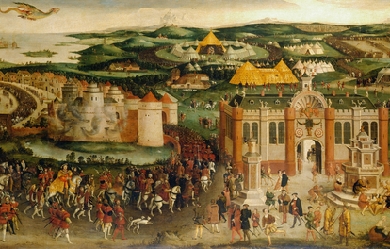
Edmund Spenser (c. 1552 – 13 January 1599) was an English poet best known for The Faerie Queene, an epic poem and fantastical allegory celebrating the Tudor dynasty and Elizabeth I. He is recognised as one of the premier craftsmen of Modern English verse in its infancy, and is considered one of the greatest poets in the English language. Edmund Spenser was born in East Smithfield, London, around the year 1552, though there is some ambiguity as to the exact date of his birth. As a young boy, he was educated in London at the Merchant Taylors' School and matriculated as a sizar at Pembroke College, Cambridge. While at Cambridge he became a friend of Gabriel Harvey and later consulted him, despite their differing views on poetry. In 1578 he became for a short time secretary to John Young, Bishop of Rochester. In 1579 he published The Shepheardes Calender and around the same time married his first wife, Machabyas Childe. In July 1580 Spenser went to Ireland in service of the newly appointed Lord Deputy, Arthur Grey, 14th Baron Grey de Wilton. When Grey was recalled to England, he stayed on in Ireland, having acquired other official posts and lands in the Munster Plantation. At some time between 1587 and 1589 he acquired his main estate at Kilcolman, near Doneraile in North Cork. Among his acquaintances in the area was Walter Raleigh, a fellow colonist. He later bought a second holding to the south, at Rennie, on a rock overlooking the river Blackwater in North Cork. Its ruins are still visible today. A short distance away grew a tree, locally known as "Spenser's Oak" until it was destroyed in a lightning strike in the 1960s. Local legend has it that he penned some of The Faerie Queene under this tree. In 1590 Spenser brought out the first three books of his most famous work, The Faerie Queene, having travelled to London to publish and promote the work, with the likely assistance of Raleigh. He was successful enough to obtain a life pension of £50 a year from the Queen. He probably hoped to secure a place at court through his poetry, but his next significant publication boldly antagonised the queen's principal secretary, Lord Burghley, through its inclusion of the satirical Mother Hubberd's Tale. He returned to Ireland. By 1594 Spenser's first wife had died, and in that year he married Elizabeth Boyle, to whom he addressed the sonnet sequence Amoretti. The marriage itself was celebrated in Epithalamion. In 1596 Spenser wrote a prose pamphlet titled, A View of the Present State of Ireland. This piece, in the form of a dialogue, circulated in manuscript, remaining unpublished until the mid-seventeenth century. It is probable that it was kept out of print during the author's lifetime because of its inflammatory content. The pamphlet argued that Ireland would never be totally 'pacified' by the English until its indigenous language and customs had been destroyed, if necessary by violence. Later on, during the Nine Years War in 1598, Spenser was driven from his home by the native Irish forces of Aodh Ó Néill. His castle at Kilcolman was burned, and Ben Jonson (who may have had private information) asserted that one of his infant children died in the blaze. In the year after being driven from his home, Spenser travelled to London, where he died aged forty-six. His coffin was carried to his grave in Westminster Abbey by other poets, who threw many pens and pieces of poetry into his grave with many tears. His second wife survived him and remarried twice. Rhyme and reason Thomas Fuller included in his Worthies of England a story that The Queen told her treasurer, William Cecil, to pay Spenser one hundred pounds for his poetry. The treasurer, however, objected that the sum was too much. She said, "Then give him what is reason". After a long while without receiving his payment, Spenser gave the Queen this quatrain on one of her progresses: I was promis'd on a time, To have a reason for my rhyme: From that time unto this season, I receiv'd nor rhyme nor reason. She immediately ordered the treasurer pay Spenser the original £100. This story seems to have attached itself to Spenser from Thomas Churchyard, who apparently had difficulty in getting payment of his pension (the only other one Elizabeth awarded to a poet). Spenser seems to have had no difficulty in receiving payment when it was due, the pension being collected for him by his publisher, Ponsonby. The Faerie Queene Spenser's masterpiece is the epic poem The Faerie Queene. The first three books of The Faerie Queene were published in 1590, and a second set of three books were published in 1596. Spenser originally indicated that he intended the poem to consist of twelve books, so the version of the poem we have today is incomplete. Despite this, it remains one of the longest poems in the English language. It is an allegorical work, and can be read (as Spenser presumably intended) on several levels of allegory, including as praise of Queen Elizabeth I. In a completely allegorical context, the poem follows several knights in an examination of several virtues. In Spenser's "A Letter of the Authors," he states that the entire epic poem is "cloudily enwrapped in allegorical devises," and that the aim behind The Faerie Queene was to “fashion a gentleman or noble person in virtuous and gentle discipline.” Shorter poems Spenser published numerous relatively short poems in the last decade of the sixteenth century, almost all of which consider love or sorrow. In 1591 he published Complaints, a collection of poems that express complaints in mournful or mocking tones. Four years later, in 1595, Spenser published Amoretti and Epithalamion. This volume contains eighty-nine sonnets commemorating his courtship of Elizabeth Boyle. In “Amoretti,” Spenser uses subtle humour and parody while praising his beloved, reworking Petrarchism in his treatment of longing for a woman. “Epithalamion,” similar to “Amoretti,” deals in part with the unease in the development of a romantic and sexual relationship. It was written for his wedding to his young bride, Elizabeth Boyle. The poem consists of 365 long lines, corresponding to the days of the year; 68 short lines, claimed to represent the sum of the 52 weeks, 12 months, and 4 seasons of the annual cycle; and 24 stanzas, corresponding to the diurnal and sidereal hours.[citation needed] Some have speculated that the attention to disquiet in general reflects Spenser’s personal anxieties at the time, as he was unable to complete his most significant work, The Faerie Queene. In the following year Spenser released "Prothalamion," a wedding song written for the daughters of a duke, allegedly in hopes to gain favor in the court. The Spenserian stanza and sonnet Spenser used a distinctive verse form, called the Spenserian stanza, in several works, including The Faerie Queene. The stanza's main meter is iambic pentameter with a final line in iambic hexameter (having six feet or stresses, known as an Alexandrine), and the rhyme scheme is ababbcbcc. He also used his own rhyme scheme for the sonnet. Influences and influenced Though Spenser was well read in classical literature, scholars have noted that his poetry does not rehash tradition, but rather is distinctly his. This individuality may have resulted, to some extent, from a lack of comprehension of the classics. Spenser strove to emulate such ancient Roman poets as Virgil and Ovid, whom he studied during his schooling, but many of his best-known works are notably divergent from those of his predecessors.[15] The language of his poetry is purposely archaic, reminiscent of earlier works such as The Canterbury Tales of Geoffrey Chaucer and Il Canzoniere of Francesco Petrarca, whom Spenser greatly admired. Spenser was called a Poets' Poet and was admired by William Wordsworth, John Keats, Lord Byron, and Alfred Lord Tennyson, among others. Walter Raleigh wrote a dedicatory sonnet to The Faerie Queene in 1590, in which he claims to admire and value Spenser’s work more so than any other in the English language. In the eighteenth century, Alexander Pope compared Spenser to “a mistress, whose faults we see, but love her with them all." A View of the Present State of Ireland n his work A View of the present State of Ireland, Spenser devises his ideas to the issues of the nation of Ireland. These views are suspected to not be his own but based on the work of his predecessor, Lord Arthur Grey de Wilton who was appointed Lord Deputy of Ireland in 1580 (Henley 19, 168-69). Lord Grey was a major figure in Ireland at the time and Spenser was influenced greatly by his ideals and his work in the country, as well as that of his fellow countrymen also living in Ireland at the time (Henley 169). The goal of this piece was to show that Ireland was in great need of reform. Spenser believed that “Ireland is a diseased portion of the State, it must first be cured and reformed, before it could be in a position to appreciate the good sound laws and blessings of the nation” (Henley 178). In A View of the present State of Ireland, Spenser categorizes the “evils” of the Irish people into three prominent categories: laws, customs, and religion (Spenser). These three elements work together in creating the disruptive and degraded people. One example given in the work is the native law system called “Brehon Law” which trumps the established law given by the English monarchy (Spenser). This system has its own court and way of dealing with infractions. It has been passed down through the generations and Spenser views this system as a native backward custom which must be destroyed. Spenser also recommended scorched earth tactics, such as he had seen used in the Desmond Rebellions, to create famine. Although it has been highly regarded as a polemical piece of prose and valued as a historical source on 16th century Ireland, the View is seen today as genocidal in intent. Spenser did express some praise for the Gaelic poetic tradition, but also used much tendentious and bogus analysis to demonstrate that the Irish were descended from barbarian Scythian stock. References Wikipedia - http://en.wikipedia.org/wiki/Edmund_Spenser
Environmental scientist and maybe a poet. I suspect like most people on here I have an urge to write. I've been much buoyed by kind words and likes over the years on this site, despite been in the weeds and not writing for the past few. Now I have my head above the water I can hear my muse again. Thank you kindly for stopping by. I love reading work by others at all stages of their writing journey. Bon Voyage!
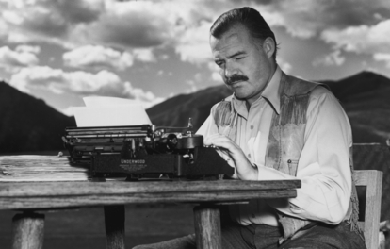

Ernest Hemingway (1899-1961) was one of the most significant American authors of the Twentieth century . His novels and short fictions have left an indelible mark on the literary production of the United States and the world. Although most often remembered for his economical and understated fiction, he was also a noted journalist. In 1954, Ernest Hemingway was awarded the Novel Prize in Literature. Hemingway is also known for his heroic, adventurous and often stereotypically “manly” public persona. The myth he cultivated of himself as a man of action aided the important Modernist reading of many of his works.


"Life imitates Art, far more than Art imitates life". Hi, my name is Laila.. I love everything in Arts, I think Nature is the most beautiful thing humanity is blessed with. I love looking at the vast sky and the ocean because, for a moment it reminds me that society is small and I can create my own system/ pieces of art that doesn't need to fall in place with the norms the the system created. I write, yes, it's kind of something I kind of find solace in.. Delilah, my pen name. An entire different shade of me comes out when I am left with a notebook and pen.. Spilling ink has always been a part of me.. Uh.. I believe that kindness is the most beautiful of qualities one could have... You don't have to be rich or famous to be beautiful... You just have to have a... heart filled with empathy, love, compassion, humility and most of all.. Kindness. And then you are... Beautiful. For true beauty comes from within.. I'm 18 years old, currently a student, studying to be an English teacher. And very very nervous when it comes to speaking in front of a class... #confessions.. 2016 - There's plenty I'd like to state that just has that.. 'Wow' effect, I think the best word for this would be, Yūgen. Something about this world, this experience. To watch the Sun sink behind a hill and wait for the light of the stars. To wander into the unknown without reason or return. To watch trees sway and the colour of Autumn fall. To trace your fingers on your once so dearly beloved's hand and know all the routes on it yet... still not know that it was the last time you would touch them. To contemplate the paths of the birds across the vast sky and around the sun, and so, we have been.. Turned. xxxxx I tend to isolate myself sometimes... don't worry, Nothing is wrong, it's just the way I am, I find it more.... meaningful, as I go through different perspectives... .................( uhhhhh... Figuring out Where's Never land ... ^_^) ........ Anyway, Thank you! for going though my work... Cuidate!... Take care! Delilah Instagram : @of.blue.heart.waves.x



